Book Sultan Travel Bus tickets for your next trip
Easily compare and book your next trip with Busbud

Sultan Travel
Book cheap Sultan Travel Bus tickets online, find schedules, prices, station locations, services, promotions and deals.
Sultan Travel popular routes and schedules
Busbud helps you easily search and browse through different Sultan Travel fares to find the cheapest Sultan Travel bus tickets.
View different Sultan Travel bus schedules and Sultan Travel ticket prices to find a bus based on your traveling needs.
You'll be able to see which amenities are available for each individual departure when you purchase your Sultan Travel bus tickets online. These amenities may include WiFi, onboard restrooms, A/C, and power outlets among many others.
We give you access to all available Sultan Travel bus routes to faciliate your Sultan Travel bus bookings.
Be sure to keep an eye out for a coupon code to benefit from Sultan Travel discounts and cheap bus tickets.
Need to contact Sultan Travel customer service? Busbud provides you with Sultan Travel phone number so you can easily reach out to them.
With our partnership with Sultan Travel, Busbud is able to offer reliable Sultan Travel bus services to help you travel comfortably and securely.

Amenities on Sultan Travel buses
- Standard seat
Sultan Travel's Coverage in Numbers
- Daily Departures 14
- Countries 2
Sultan Travel Bus classes
Sultan travel faq, is there wifi on sultan travel.
No, there is no WiFi on Sultan Travel. No worries, you can use your time on the bus to catch up on some much needed sleep! You can also download your favorite movies, TV shows, and audiobooks or bring a good book.
Are there power outlets or USB plugs on Sultan Travel?
No, there aren't any power outlets or USB plugs on Sultan Travel. If available, we recommend bringing a battery pack to keep your devices charged during longer bus rides. You can also bring a good book to pass the time during your trip.
Does Sultan Travel have a toilet on board?
No, Sultan Travel buses usually don't have a toilet on board. Don't worry, the bus will make stops during your bus trip so that you can stretch your legs, use the toilet and get some snacks.
Does Sultan Travel offer meals or snacks during the bus trip?
There are no meals or snacks offered on Sultan Travel buses. We recommend that you bring some snacks and drinks in a reusable water bottle for your bus trip.
Do you have to print your Sultan Travel bus ticket?
No, you don't need to print your ticket. You can board Sultan Travel buses by showing your e-ticket on your smartphone, along with a valid photo ID. Your ticket will be sent to you by email when booking on Busbud.
Does Sultan Travel allow pets on board or in the hold of the bus?
Only Certified Service animals are allowed on Sultan Travel buses. Unfortunately, your pets are not allowed on the bus or in the hold of the bus.
What are the amenities on Sultan Travel buses?
Sultan Travel goes the extra distance to offer best-in-class services to all travelers. You will be able to enjoy Standard seat on their buses.
Why choose Busbud?
The best way to book bus and train tickets.
Busbud is a bus and train search tool - we include Sultan Travel routes, schedules and prices in our searches along with many other train and bus companies. You can compare prices, amenities and times by searching for a route. If you find a suitable trip, you can go ahead and get your Sultan Travel ticket from us. Note that train tickets sell out, Sultan Travel and other operators generally charge a lot more for last-minute tickets or for tickets bought in person.
Sultan Travel Popular Routes, Destinations and Stations
Top sultan travel bus lines.
- Krakow to Lviv $26
- Lviv to Krakow $25
- Katowice to Lviv $29
- Lviv to Katowice $29
- Rzeszow to Lviv $25
- Przemyśl to Lviv $23
- Lviv to Przemyśl $23
- Krakow to Ivano-Frankivs’k $32
- Lviv to Rzeszow $25
- Ivano-Frankivs’k to Krakow $32
- Krakow to Chernivtsi $38
- Krakow to Kolomyia $35
- Chernivtsi to Krakow $38
- Rzeszow to Ivano-Frankivs’k $29
- Przemyśl to Ivano-Frankivs’k $44
- Kolomyia to Krakow $35
- Częstochowa to Lviv $32
- Katowice to Ivano-Frankivs’k $36
- Chernivtsi to Katowice $41
Top Sultan Travel Destinations
- Sultan Travel to Lviv
- Sultan Travel Krakow
- Sultan Travel to Katowice
- Sultan Travel Przemyśl
- Sultan Travel to Ivano-Frankivs’k
- Sultan Travel Rzeszow
- Sultan Travel to Chernivtsi
- Sultan Travel Kolomyia
- Sultan Travel to Częstochowa
Top Sultan Travel Stations and Locations
- Lviv-Holovnyi- Skadovsk-Słupsk
- Dworzec autobusowy Sądowa
- Przemysl dworzec autobusowy
- Avtobusna zupynka
Other local bus companies

Interested in more? Receive travel deals, trip reminders and other updates by email!
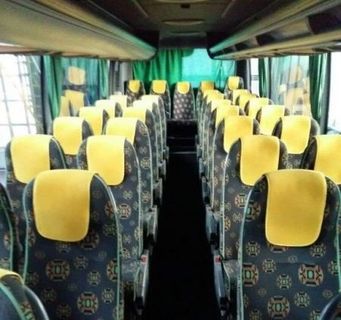
- Sultan Travel 🚌
Sultan Travel
- Popular Routes
- Schedule and Timetable
About Sultan Travel
Bus is a convenient way of travel no matter whether you need to get to a neighboring town a couple of hours away or venture further afield crossing the whole country. Whatever your budget, buses have you covered. Express buses offer the most affordable ticket price for travellers who have very little money to spend. VIP options are geared toward those who do not want to compromise on comfort. Before you jump on a bus, make sure you choose the type of service which suits you best. For a long-haul trip look for a VIP or first-class coach which provides non-stop service to your destination or just call a minor number of stations along the way. Express or local buses in many cases may prove an acceptable choice for shorter trips, but longer rides are often not the best buy. Study the timetable before going as many long-haul destinations are served by night buses, and some offer wider seats or sleeper berths for such travels. Make an online reservation for your bus ticket with Sultan Travel. Other travellers’ reviews will help you to choose the best ticket and coach class.
Sultan Travel Popular Stations
The main stations covered by Sultan Travel’s buses include:
- Hradec Kralove
- Katowice Airport
- Khmelnytskyi
- Zviahel Bus Station
- Rzeszow Jasionka Airport
- Czestochowa
- Zielona Gora
- Bielsko Biala
- Nowy Dwor Mazowiecki
- Skarzhisko Kamenna
- Krakow Airport
- Kamianets Podilskyi
- Rivne Bus Station
- Lviv Bus Station
- Zaporizhzhia
- Lviv Zaliznychnyi Station
- Starogard Gdanski
- Ivano Frankivsk
- Kropyvnytskyi
- Duesseldorf
- Drohobych Train Station
- Warsaw Chopin Airport
- Kolomyia Bus Station
- Krakow Railway Station
- Gorzow Wielkopolski
- Circle K Gas Bus Stop
- Swinoujscie
- Warsaw Modlin Airport
Sultan Travel Top Destinations
Sultan Travel buses ply a number of routes and here is the list of some of the most popular ones:
- Lviv - Krakow
- Krakow - Lviv
- Lviv - Przemysl
- Lviv - Katowice
- Rzeszow - Lviv
- Ivano Frankivsk - Katowice
- Przemysl - Lviv
- Ivano Frankivsk - Krakow
- Chernivtsi - Czestochowa
- Przemysl - Ivano Frankivsk
- Czestochowa - Lviv
- Ivano Frankivsk - Rzeszow
- Lviv - Czestochowa
- Krakow - Ivano Frankivsk
- Rzeszow - Chernivtsi
- Katowice - Ivano Frankivsk
- Lviv - Rzeszow
- Krakow - Kolomyia
- Katowice - Chernivtsi
- Chernivtsi - Krakow
- Krakow - Chernivtsi
- Kolomyia - Krakow
- Rzeszow - Ivano Frankivsk
- Katowice - Lviv
- Przemysl - Chernivtsi
- Ivano Frankivsk - Przemysl
- Chernivtsi - Katowice
Sultan Travel Ticket Prices & Bus Classes
One of the best things about bus travel is that you can almost tailor-make your trip adjusting it to your requirements for privacy and comfort. Different classes and types of buses cater to the different needs of travellers. The cheapest trips are normally offered by standard-class buses. They may be called local, express or ordinary. These are a good choice for shorter trips. Sleepers or VIP coaches are good both for longer and overnight trips. They may offer berths or wide soft reclining seats, sometimes with built-in massage options, blankets, soft drinks, and snacks, or more substantial meals on board or during toilet or refuelling stops. Travelling by night buses allows you to save on a hotel room, but to ensure the most comfortable ride do choose the class of your bus wisely. Prices always depend on the distance you ride and the type of coach. For some, even shorter trips, it is worth investing some extra money and buying a seat on a VIP bus as it can save you twice as much time as you spend travelling by an ordinary bus.
Travel by Bus: Pros & Cons
Pros of bus travel.
- Bus is the best choice to get to destinations that are not connected by rail or planes. The network of buses often covers almost the whole country, and their routes are well and long-established.
- Opposite to air travel and sometimes rail travel, taking a bus does not require arriving at the bus station much in advance. Check-in, even on international routes, does not take much time. Luggage allowances are usually very traveller-friendly, and the fee for extra luggage, if limits are set, is normally not very high.
- Bus tickets can be more affordable compared to air or fast train tickets. There is always a choice of ticket classes for all pockets. Cheaper standard options may be a bit slow and do not offer top comfort, but anyway acceptable and bring you to your destination. On longer routes, toilets or toilet stops as well as snacks, water, and sometimes toiletries and blankets are almost always included in the price.
- If you are ready to spend more, some VIP coaches offer seating comparable to business class on a plane with wide soft reclining seats, blankets, fewer passengers, and many other perks to make your trip a pleasant journey.
Cons of Bus Travel
- Newer intercity bus terminals are very often located out of the city close to bigger highways to allow buses to avoid city congestion. Unfortunately, it may create extra challenges for travellers, too. Getting to such a terminal may be a problem as in some destinations there are restrictions on vehicles allowed to enter the terminal, and you will have to use special carriers to get there. This results in higher costs as prices may be inflated. Also do calculate extra time if you are travelling during rush hours, especially if you are not familiar with the traffic situation at your starting point.
- Buses are probably the means of transport which runs out of schedule more often than trains or planes. They are heavily dependent on the road situation which sometimes can be unpredictable – accidents, road construction works, detours, etc. This is especially true for travels during weekends, high season, or national holidays. Do keep this in mind and do not plan tight connections.
- Travelling on certain routes or during the most popular periods may require advanced booking. Bear in mind that it is not always possible to show up at the bus station and hop on the next bus – tickets may well be all sold out, so organize your trip accordingly.

Sultan Travel Popular Routes
Sultan travel schedule & timetable, sultan travel stations.
- My listings
- List a company
- Classifieds
- Travel & Transport
- Travel Agencies

Book Sultan
Travel Agencies in Kuwait
Sultan Travel Agencies is one of the largest travel distributors in Kuwait. Established in 1984, Sultan Travel Agency has over 35 years of experience, making it one of the few leading travel management companies that are recognized and trusted in Kuwait today.
We derive together each day to fulfill a promise of offering the single most comprehensive travel experience to users, through the best Mobile and Desktop applications. With intuitive products that have the largest selection of flights, hotels and Packages, we keep customers at the center of everything we do.
Pack and travel where your heart points to, we have the best Flight and Hotel deals for you. Get best discounts on Flight and Hotel bookings for your happy vacations / Family / Business trip.
Flight, Hotel and Package bookings are designed, customized and crafted to meet the needs of each valued customer. Avail great offers, Exclusive deals, Instant discounts and Updates on your flight status.
Sultan Travel Agencies employs some of the best travel industry professionals in Kuwait today. Our multi lingual Travel Advisors are at the top of their game with their industry expertise and are well connected to a regional & world-wide network that enables them to meet all their customers’ travel requirements.
“A STRONG AND TRUSTED TRAVEL BRAND – BOOKSULTAN.COM FROM SULTAN TRAVEL AGENCY.”
- Share on Facebook
- Share on twitter
- Share on LinkedIn
- Send to friend
Send a message to Book Sultan
Some of users are having trouble paying with our bank ING with valid card details. We recommend you try your credit card with PayPal (you do not need an account) as this has solved the problem for many people.
Did you know your Internet Explorer is out of date?
To get the best experience possible using our site we recommend that you upgrade to a newer version. Click here to upgrade your browser
To get the best experience possible using our site on Windows XP we recommend to use Google Chrome or Firefox.
Get Google Chrome Get Firefox
Book Sultan
About this app
Data safety.
Ratings and reviews
- Flag inappropriate
App support
- Sultan Travels 🚌
Sultan Travels
- Popular Routes
About Sultan Travels
Buses are the most affordable means of transport with a large number of terminals across the country and convenient timetables to help you plan your trip. Buses is a convenient option both for those who travel on a shoestring budget and those who do not want to compromise on comfort. Sultan Travels offers bus service with an online reservation available. Before booking your ticket, read other travellers’ reviews to choose the best option.
What are the Main Stations of Sultan Travels?
Sultan Travels operates buses to and from the following stations:
- Nala Sopara
- NerulMumbai
What are the Most Popular Routes of Sultan Travels?
The most popular destinations of Sultan Travels are:
- Solapur - Mumbai
What are the Bus Classes & Prices of Sultan Travels?
The price of your bus trip will depend both on the destination and the class of your ticket. Note that not all ticket classes are available on certain routes yet for longer trips there is almost always a good choice of options. Opt for a sleeper coach for the most convenient overnight trip. Sleeper buses are usually equipped with berths or soft reclining seats, feature an onboard toilet and your ticket may also include other perks like snacks or even a lunch. Taking a night bus is also a good idea if you want to save on your hotel room. During the day an express service is often the best value for money as it makes less stops than an ordinary or standard class bus and travels faster. On some routes it may be crucial to choose the right class as, say, an ordinary or second class bus may need some 6 hours to cover the distance the first class or express bus travels in two hours!
Pros & Cons of Bus Travel
Pros of bus travel.
Buses usually boast the widest network of destinations covered. They travel to the places you cannot get to by plane or even by train
Travelling by bus is easy – there is no need to arrive to the bus terminal much in advance, and the check-in is usually a very fast formality opposite to air travel
Bus tickets are very affordable. Yes, there are costly first class or VIP options but is you are on a budget, bus is the first means of transportation you have to think about
At the same time, there are different classes of service to suit any budget. If you are after a higher level of comfort, buses get you covered, too.
Cons of Bus Travel
Intercity bus terminals can be located outside the city centre in the outskirts. It means you will need to calculate extra time and money to get there. In certain destinations getting from the bus terminal can cost you more than you would expect because only a limited number of transportation companies is allowed to serve the route – and prices may be inflated.
During busy weekends or high season buses serving some tourist destinations may run out of schedule and require advanced booking.
While buses are not as weather dependent as ferries, bus trips can also be delayed or cancelled due to bad weather or road conditions – keep it in mind if travelling during certain seasons or to certain destinations.
Sultan Travels Popular Routes
Sultan travels stations.
Booksultan - Get best flight & hotel deals.
Get the free booksultan app, download our app from play store.
Access budget-friendly flights and hotels conveniently via the Booksultan App for exclusive benefits!

Download Our App from App Store

BookSultan 4+
Sultan travel agency co., designed for iphone.
- 3.0 • 2 Ratings
iPhone Screenshots
Description.
Sultan Travel Agencies is one of the largest travel distributors in Kuwait. Established in 1984, Sultan Travel Agency has over 35 years of experience, making it one of the few leading travel management companies that are recognized and trusted in Kuwait today. We derive together each day to fulfill a promise of offering the single most comprehensive travel experience to users, through the best Mobile and Desktop applications. With intuitive services that have the largest selection of flights, hotels and Packages, we keep customers at the center of everything we do.
Version 3.0
- bug fixes
Ratings and Reviews
App privacy.
The developer, SULTAN TRAVEL AGENCY CO. , indicated that the app’s privacy practices may include handling of data as described below. For more information, see the developer’s privacy policy .
Data Not Collected
The developer does not collect any data from this app.
Privacy practices may vary, for example, based on the features you use or your age. Learn More
Information
English, Arabic
- App Support
- Privacy Policy
You Might Also Like
GCC Bookers
+91-8929175340
- Plan A Trip

- Hawalli Travel Agents
Book Sultan

Member Since 2020
Tunis Street , Hawalli , Kuwait
Contact Agent Plan A Trip Text Me
About Company
Contact detail.
- Tunis Street, Hawalli, Kuwait
- +965-XXXXXX0799 View Contact
Kuwait Tour Packages by Theme
Kuwait tour operators, kuwait travel guide.
Powered by TourTrvelWorld
How to visit Astana in 3 days
By Joan Torres 2 Comments Last updated on April 25, 2024

Astana, today Nur-Sultan, was described as the weirdest capital in the world by CNN and I agree. Enter the city into Google Maps and you will see how far away it is from anywhere.
Kazakhstan is the same size as Western Europe but it is mostly unpopulated and nearly completely covered in flat, arid steppe.
Traveling to Astana by plane is surreal. There is nothing as far as you can see until you literally find yourself over the capital. There is nothing – not a mountain, not a tree, no other city or suburbs – nothing.
It is difficult to believe today that when the capital was moved from Almaty in 1997 this was just a dusty little village.
Since then it has gone through a building boom turning it into a futuristic city full of modern, quirky architecture all funded by the country’s vast oil and energy resources.
18.3 million people live in Kazakhstan and although the general standard of living is reasonable I question whether the money could have been better spent.
This article contains everything you need to know to visit Nur-Sultan , former Astana.

In this Astana travel guide you will find:
Table of Contents
- Is Astana or Nur Sultan?
- Best time to visit
- Transportation
- Getting to Astana
- Moving around the city
- Getting from the airport
- Where to stay
- Where to eat
- Things to do is 3 days
- More information
our recommended travel insurance for Kazakhstan
With its Backpacker plan, IATI Insurance is the best insurance for any kind of adventurous destination, like Kazakhstan.
Is it Astana or Nur-Sultan?
Shortly after the capital was moved from Almaty in 1997 it was named Astana, which means ‘capital’ in Kazakh.
The official reason for the relocation was the danger posed by earthquakes in the Almaty region.
The real motive is believed to be more to do with geopolitics and the relationship with Kazakhstan’s two largest trading partners – Russia and China.
For years there was speculation over whether Astana would be renamed after the leader who created it, Nursultan Nazarbayev . He was the president for nearly 30 years, starting his term when the country was still part of the Soviet Union.
Presidents are, according to the country’s constitution, limited to two 5-year terms. However, these rules were changed since the president was so popular – he regularly won 98% of the votes in the general elections.
Nursultan surprised many critics of his regime when he stood down in March 2019. He was expected to be ‘president for life’, as seen in several other countries in the region.
However, at 78-years old and retaining powers as chairman of the Security Council and head of the ruling party, I am not sure how far he actually stepped down in reality.
Kassym-Jomart Tokayev was named as his successor.
As a tribute to his predecessor, he renamed the capital Nur-Sultan .
Officially the name was changed in March 2019 but Astana is still widely used and is the name best known abroad, the named most commonly used in this travel blog.
Central Asia is a complicated region and, in order to fully understand the country, it is recommended to read 1 or 2 books. Check: The 28 best books on Central Asia

Best time to visit Nur-Sultan
Having a steppe climate the variances between cold winter nights and sizzling summer days can be 80 degrees Celsius.
When we visited I was surprised to learn that Nur-Sultan is the second coldest capital in the world after Ulaanbaatar (Mongolia).
Unless you are prepared for -20 degrees Celsius, winter is not the best time to visit.
The other extreme are the summer months of July and August when temperatures can reach up to 40 degrees Celsius.
These large variances make the shoulder season of May/June and September/ October the best times to visit.
Having said that, we visited in early May and I was surprised at how cold it was.
Coming from the warmer climates of Almaty and Uzbekistan this was a bit of a shock to the system. We ended up wearing most of the clothes we brought with us during the evenings when the temperature drops quite considerably.
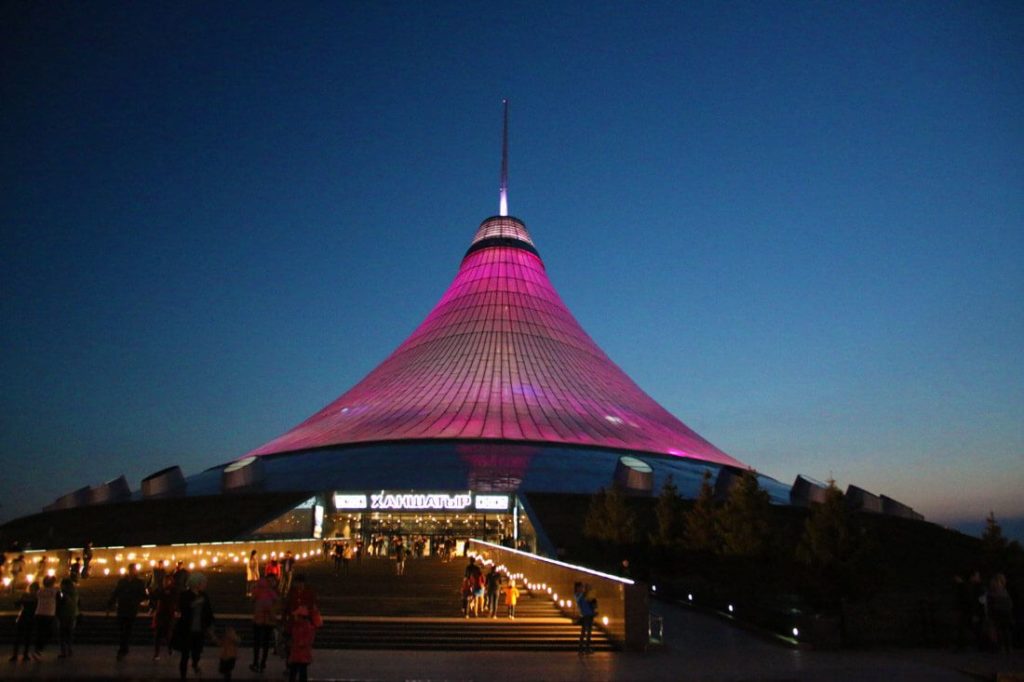
Need to know about transportation
How to travel to astana.
There are several ways, depending on where you travel from.
How to travel to Astana from Almaty
Getting to Astana from Almaty by plane
I highly recommend traveling to Nur-Sultan by plane from Almaty. If you know your travel dates and book in advance, I found that it was cheaper to take the 1.5-2 hours flight than the 14-hour speed train. And it was definitely more comfortable (if the reports about the speed train being so bumpy making it impossible to sleep are true).
Getting to Astana from Almaty by train
There are two types of trains – the speed train and the slow train .
The speed train takes 14 hours overnight in both directions and most days there are 2 slow trains leaving mid-morning and taking roughly 24 hours.
For everything you need to know about taking the train in Kazakhstan read this post .
Tickets can be booked in person or online. For the speed train tickets cost $50-65 and for the slow train $20-30.
The Kazakhstan railways website is not available in English so unless you can read Cyrillic I recommend using Real Russia .
This site has a good search function in English to find train times so is useful even if buying your own ticket at the station.
In the summer and during holidays train tickets should be bought in advance.
For the speed train early booking discounts are up to 40% so it pays to plan ahead.
How to travel to Astana from Russia (Moscow)
This is not a cheap route with tickets costing around $300 per person . Trains depart every 2nd day on even-numbered dates and take 3-4 days to cover the 3,105km between the two cities.
Astana travel tip – This train only crosses the border one time. Other routes can cross it several times and there is some uncertainty about whether this means you need a double-entry visa. Make sure to check the visa needed for the train route you are taking.
How to travel from (China) Urumqi to Astana by train
Leaving every Saturday afternoon from Astana railway station the train arrives Monday morning in Urumqi. The return departs late on Monday getting into Nur-Sultan on Wednesday.
The train can only be booked through travel agents and costs upwards from $350 per person in a compartment with 4 beds. The journey takes nearly 40 hours with 8 of these spent at the border changing the wheels on the train carriage since the tracks in the two countries have different gauges.
How to move around Nur-Sultan
The buildings are enormous and distances deceptively far. Luckily there is a good bus system with routes marked at each stop making it easy to find which bus you need.
If in doubt you can find an interactive English route map here .
Buses run from 6-7am to 10-11pm and tickets costs 90T for shorter routes within the city and 150T for express routes. The most useful routes for sightseeing are:
- 10 – runs every 15 minutes from the bus station to the airport taking one hour via Zhenis, Moldagulova, Beibitshilik, Seufullin, Respublika, Konaev and Kabanbay Batyr
- 21 – Astana-1 to Bayterek Tower, Ak Orda, the pyramid and National Museum, via Zhengis, Sarayka, Qabanbay Batyr, Qonayev and Mangilik
- 32 – Astana Nurly Zhol to the old city via the pyramid, Ak Orda, Nurzhol bulvar, Turan dangyly and Respublika dangyly
- 40 – Astana-1 to the pyramid and Khan Shatyr via Seyfullin and Kenesary in old Nur-Sultan, and Sarayshyk, Mangilik and Dostyk in modern Nur-Sultan
- 505 Express bus – Express bus from Astana Nurly Zhol to Khan Shatyr, via the pyramid
How to get to and from the airport
Uber operates here and is a good option if the Wi-Fi on your phone can be used without high network charges.
Taxis are meant to cost 2,000-3,000T but we found that they wanted more. They will not use the meter so make sure you agree on a price before getting in. As with most countries in this region, Russian is widely spoken but English less so. You will probably have more luck negotiating a better price if you speak Russian.
Taking the bus is very easy. The bus stop is a few hundred metres to the left after exiting the terminal. The ticket price is either 90T or 150T (the higher price is for the express bus). Three bus routes pass through the airport leaving roughly every 15 minutes:
- Bus #10 runs between the airport and the train station stopping at Khan Shatyr and down Qonayev Street. Travelling through the city centre this is likely to be the best option if you want to get the bus.
- Express bus #100 runs between the airport and the train station
- Express bus #500 runs between the airport and Astana Nurly Zhol in the very East of the city
Where to stay in Nur-Sultan
Budget – The Place Astana Hostel – Most of the budget options are outside the modern city centre. I always like to be walking distance from the sights and restaurants and the hostel with the best location and good reviews is The Place Astana Hostel.
Mid-Range – VIP House Hotel – Nur-Sultan is not a cheap city and midrange options are more expensive than in many other capitals. Close to the Singing Fountains and the Bayterek Tower is VIP House Hotel which comes with private bathrooms and good views.
Top-end – Rixos Garden Inn – Located close to Nurzhol Bulvar at the Khan Shatyr end. Rooms are of a standard that you would expect from any Western high-end chain.
Where to eat in Nur-Sultan
Looking at Google Maps plenty of restaurants are shown along Nurzhol Bulvar.
However, we found it difficult to find somewhere to stop for lunch. Some restaurants are only open in the evening and others only had a sign in Russian outside and dark windows making it difficult to know whether they were office buildings or restaurants.
Khan Shatyr has a food court with all the usual fast-food brands and some local restaurants but if you fancy something a bit different, I recommend going to Turan Avenue.
Like everywhere in this city, the distance is long between each restaurant but there are several cuisines available such as Korean, Uzbek, Japanese, Georgian and Italian. The designs are the most interesting part.
The Uzbek restaurant reminded me of the city walls in Khiva with blue-tiled domes. The Georgian eatery is built with stone defence towers and overhanging balconies like you see in Baku . My favourite, the Mill, is a Ukrainian restaurant that looks like a windmill with live chickens in the garden. Inside the interior is decorated like a country house with fake flowers.
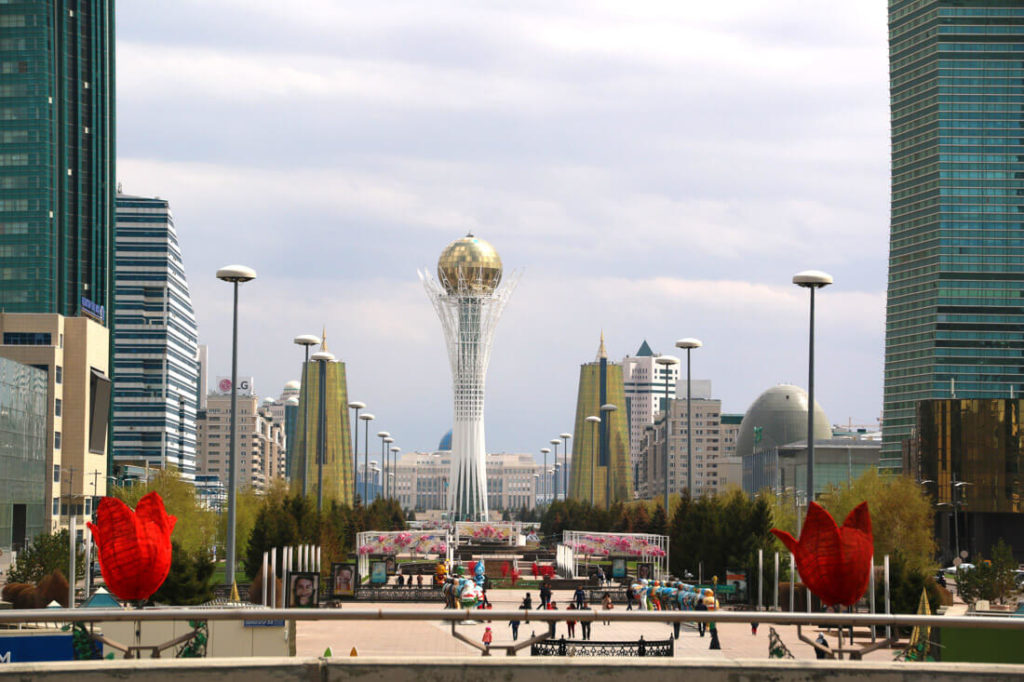
Things to do in Astana: 3-day itinerary
I love cities with ‘unusual’ (that is probably a more polite description than ‘wacky’) architecture.
There are plenty of unique things to do in Astana that did not disappoint me but my husband was less convinced.
Although the city has a good bus service make sure you wear comfortable shoes since you will be doing a lot of walking whilst visiting the capital. Distances are long. The city was clearly designed with drivers rather than walking sightseers in mind.
This Kazakhstan itinerary suggests spending 3 days in the capital. If time is limited, all the buildings detailed below can be seen in two days.
Places to visit in Astana on day 1 – Left of the Ishim River
Most of the modern buildings to visit in Astana are located on this side of the river and you can easily spend a day walking up and down Nurzhol Bulvar. At night this area is lit up and in the Summer months, there is a musical water show every day at 9pm.
Khan Shatyr
Shopping is not normally part of my sightseeing plans but this is not your average shopping centre. In fact, this is one of the best places to visit in Nur-Sultan.
Standing at one end of Nurzhol Bulvar this translucent tent is the world’s largest marquee, and one of the most emblematic places to visit in Astana. But when you enter it feels smaller than the 10 football pitches that apparently can fit inside.
Inside it has a park, monorail, boating river, mini-golf and an indoor beach complete with palm trees and sand imported from the Maldives. To ensure that beachgoers have a comfortable temperature (even during freezing winter days) a chemical lining on the building ensures that it is a constant 35 degrees inside.
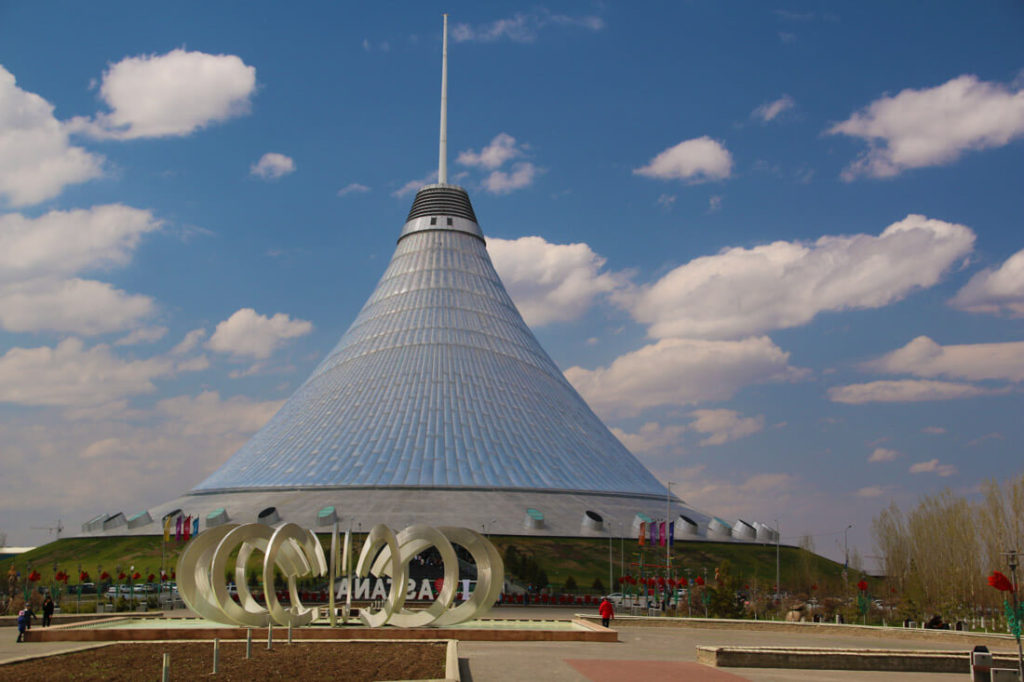
Bayterek Tower
The Bayterek Tower is probably the best-known building in Nur-Sultan and in my view the one you cannot leave without seeing. That will not be a problem since at 105m tall and with a prominent position in the middle of the Nurzhol Bulvar it is impossible to miss.
The observation deck is 97 metres high corresponding to the year Nur-Sultan became the capital. It was closed for an unknown reason when we visited and I was disappointed not to be able to put my hand in the gilded handprint of Nursultan and make a wish.
Although we did not make it to the top I would highly recommend going for the 360-degree views over the town. Entrance costs 700T.
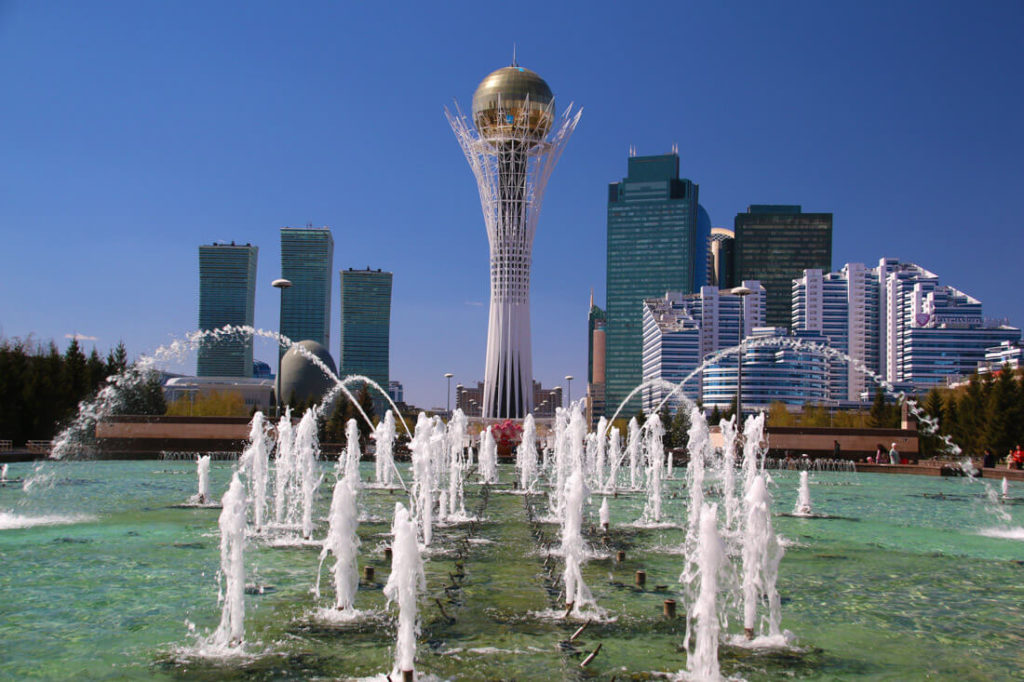
Ak Orda – Presidential Palace
The first thought that struck me when I saw this building was how much it looked like the Whitehouse in Washington DC. Ak Orda means ‘the white headquarters’ so there is a similarity in the name as well as the design.
The architects aimed for something different and unrepeatable and although it is a striking I am not quite sure whether I would call it unique. It is not easy to stand out in a city full of futuristic buildings.
The large golden towers standing either side as you approach the Palace are the House of Ministries, dubbed ‘the beer cans’ by locals. In the square there is little else to see except for the Central Concert Hall.
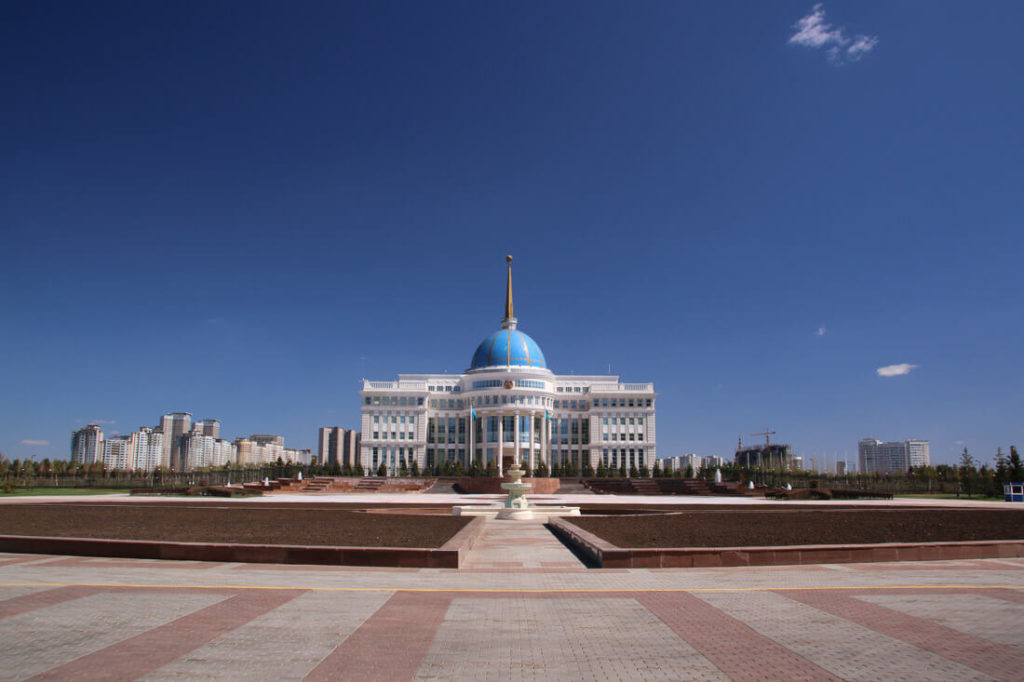
Central Concert Hall
Located in the right corner of the Presidential Palace square it is easy to miss due to the tall buildings surrounding it, covering it from view unless you are nearly right in front of it.

Nur Astana Mosque
I think of Kazakhstan as more Russian than Central Asian but 70% of the population is Muslim. This explains why two of the three largest mosques in Central Asia are located here. With a capacity for 5,000 worshippers inside and 2,000 outside this is the third largest mosque in Central Asia.
Hazret Sultan mosque (see below) might have the most grandiose prayer room but I think, being built in white granite and with a large fountain outside, Nur Astana Mosque is the prettier of the two.

Bears and lion tamers are not an unusual site at the performances but there are no aliens despite the building looking like a flying saucer.
Circus has a long tradition in the Soviet Union but what made the architect construct a circus building shaped like a UFO, or the president give it the go ahead, is difficult to fathom.
If nothing else, it is certainly noticeable. As with everything in this city it is a bit of a walk from the other sights but for me, this weird building was worth the detour.
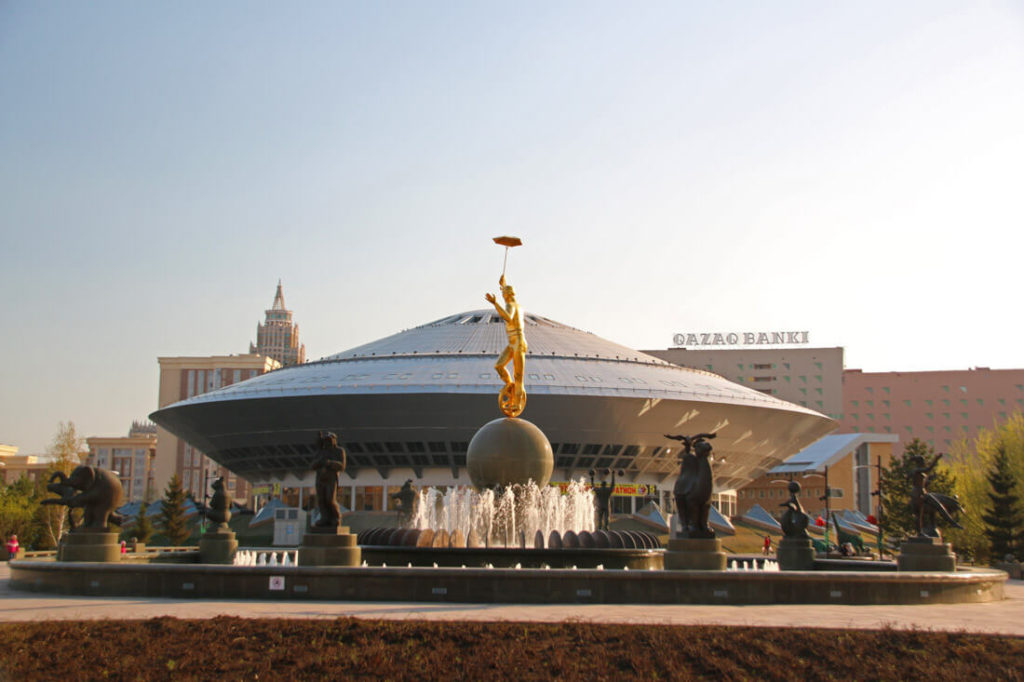
Things to do in Astana on day 2 – Right of the Ishim River
I found the left of the river has the most interesting architecture. The right side is expected to be built out significantly over the next 10 years and in 2030 plans are for the Pyramid to be the geographical center of Nur-Sultan.
Palace of Peace and Reconciliation – The Pyramid
The first draft of the Pyramid is said to have been the same size as the Great Pyramid in Egypt but that was too grand even for Nursultan and it was hastily reduced to about half the size. Despite being 62 meters tall and situated on a hill it was not as impressive as I thought it would be.
Entry is possible on a guided tour which runs roughly every 30 minutes between 10am and 6pm. Tickets cost 1,000T for adults and 650T for children.
English guides can be arranged at extra cost.
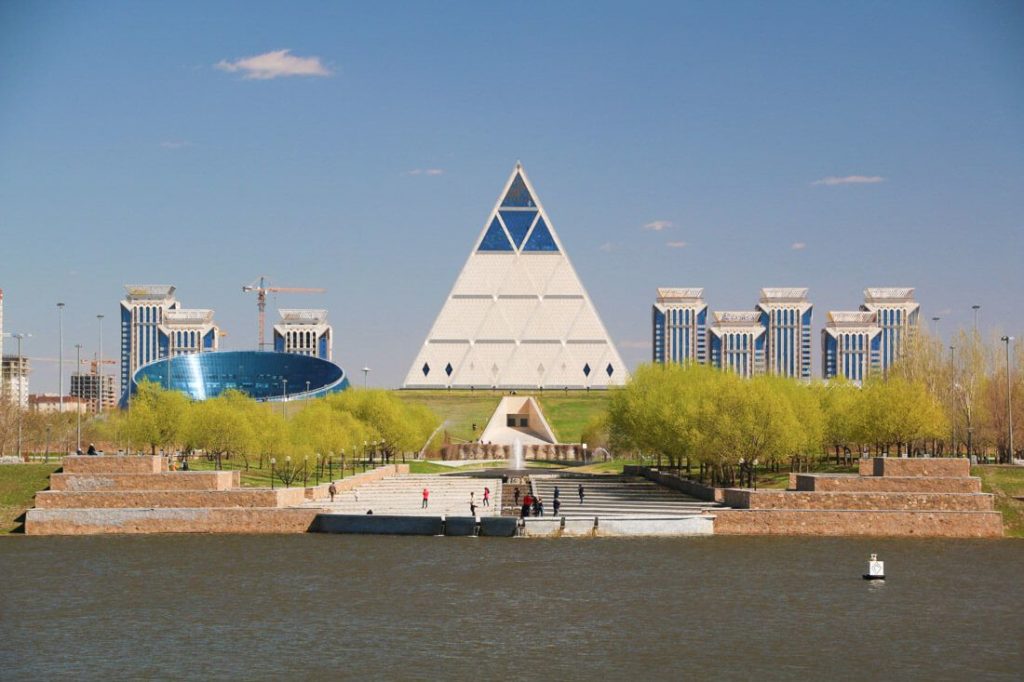
The Palace of Independence
This is an event space located in the square birds-nest-like building made of dark glass and steel. The only interesting thing to see here is the model of what Nur-Sultan will look like when it is finished, which is expected to be in 2030.
Kazakhstan has been suffering from a falling oil price over the last couple of years and the price having plummeted due to Coronavirus will make the state budget even tighter.
It will be interesting to see whether the city will ever be built out to the extent the previous president dreamt of.
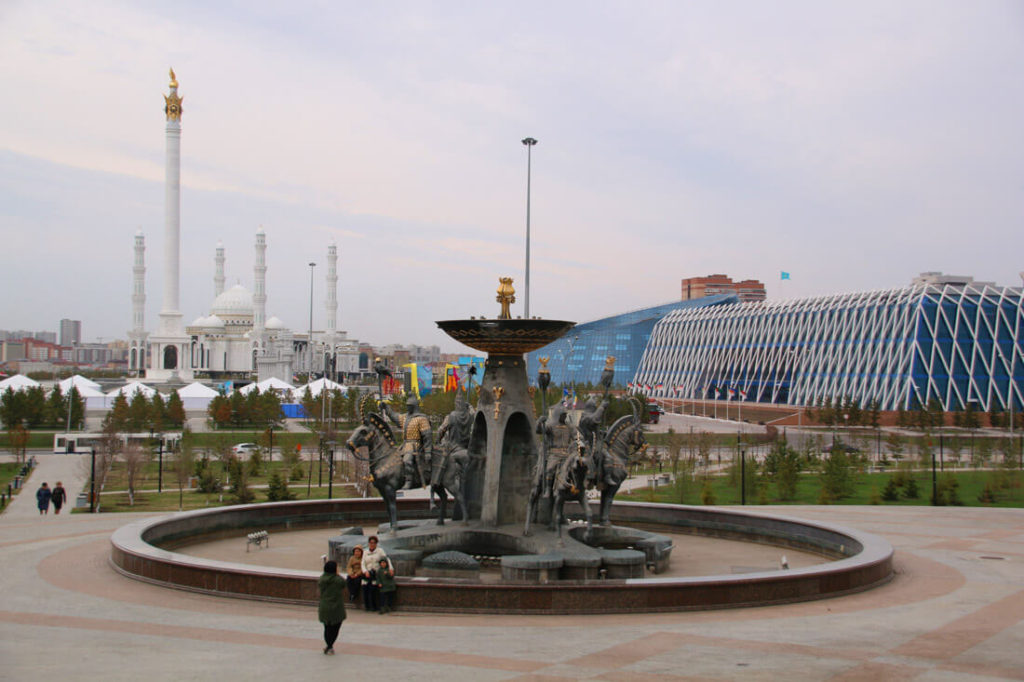
Kazakh Eli Monument
A symbol of sovereignty with the height of the 91m tall pillar representing the year independence was gained from the Soviet Union in 1991.
The golden statue at the top is Samruk, the bird that laid the egg at the top of the Bayterek Tower.
Hazret Sultan Mosque
This is the largest mosque in Central Asia and can accommodate 10,000 worshippers. The prayer room is decorated in the colour of the Kazakh flag – blue, gold and white.
With its 51m high dome and a 3-ton chandelier this room alone makes the trip across the river worth it.
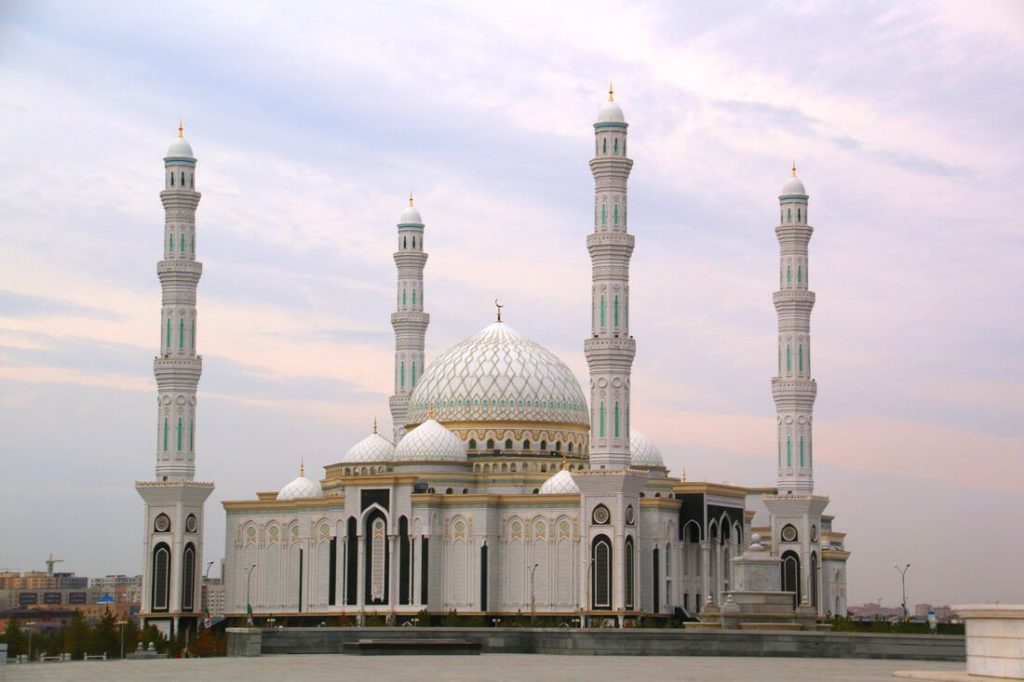
National Museum of Kazakhstan
An enormous white-marble building that covers the culture and history of Kazakhstan from ancient history up to the present day.
The museum is closed on Mondays and entry is 1,500T for adults with a further charge of 500T for photos and 2,000T for a guide.

Day 3 – Things to do near Astana
Being in the middle of nowhere, there are really only two actual places to visit around Astana:
ALZHIR Museum and Memorial Complex
Walking around Nur-Sultan with its new fancy buildings it is easy to forget that Kazakhstan was part of the Soviet Union. But a visit to this notorious concentration camp will bring it all back.
The 26th Gulag Point (as it was formally called) was for the women and children of dissenters. Little is left of the camp but the museum has recreated the huts prisoners lived in as well as the trains that brought them to the camp.
Minibuses to Akmol (also called Malinokva) depart roughly every hour and take 45 minutes. Tours can be booked in advance via the museum website . The museum is closed on Mondays.
Korgalzhyn Nature Reserve
With its 200 lakes Korgalzhyn is a popular stop for migrating birds. If you are an avid bird watcher the months of May and June are the best time to visit for the northward migration. Otherwise June to September are more interesting since salty lake Tengiz supports a large colony of flamingos at this time of year.
Local guest houses can arrange transport into the reserve. To see the flamingos you need a 4×4 which cost around 10,000T plus 3,000T for an official guide.
Shared taxis, which take two hours, are the best way to get there. The first ones depart at 10 a.m. but are very popular so make sure you arrive at least an hour before departure to secure a seat.
More information for visiting Astana
📢 In my Travel Resources Page you can find the list of all the sites and services I use to book hotels, tours, travel insurance and more.
All guides and articles for traveling in Kazakhstan destination
- Travel Guide to Kazakhstan
- Uzbekistan-Kazakhstan border crossing
- Train Guide in Kazakhstan
- Kazakhstan Itinerary
Check more city guides
- Tunis Travel Guide
- Asmara Travel Guide
- Travel Guide to Riyadh
- Muscat Travel Guide
- Travel Guide to Dubai
- Beirut Travel Guide
- Erbil Travel Guide
- Tehran Travel Guide
- Tashkent Travel Guide
- Baku Travel Guide
- Tbilisi Travel Guide
- Travel Guide to Minsk
- Kiev Travel Guide
- Travel Guide to Nouakchott
- A City Guide to Mosul

Thank you for the detailed guide to this unusual capital. I enjoyed almost every one of your highlights of Day 1 and Day 2 back in 2016 and might return some day for Day 3.
For what it’s worth, I enjoyed the 14-hour train ride from Almaty to Astana (Nur-Sultan). I showed my ticket to the uniformed woman on the platform. She said “Good evening” in English and that she was my conductor. She escorted me to my private cabin with an en suite bathroom and shower. It was a bumpy ride, but I was able to get a good night’s rest. (Perhaps it “rocked” me to sleep?) The conductor checked that I was awake well before our on-time arrival at 8:15 a.m. It was not expensive, did not require rides to and from airports, and saved me the expense of a night in a hotel. It might seem repetitive and boring to some, but I found the incredibly flat landscape had an eerie beauty along with the endless blue sky.
One recommendation: Try to get a ticket to the Astana Opera (The State Opera and Ballet Theatre). This massive Classical structure was completed in 2013 and has incredible acoustics. I got a same-day ticket online for around $5 and caught a shared taxi there for around $2. Arriving just before the opera started, the window to pick up my ticket appeared to be closed. I did my best to explain to the usher (in English), and she handed me a ticket for a box seat close to the stage. (I cannot guarantee this always happens–the website says to arrive a minimum of 10 minutes early–but people were very friendly in Kakakhstan.) The production of Madama Butterfly featured truly world-class performers. There were supertitles (over the stage) in Russian and Kazakh.
I am glad you enjoyed the guide. Sounds like I have to try the Opera next we go!
Leave a Comment Cancel reply
Your email address will not be published. Required fields are marked *
Notify me when new comments are added.
- NONFICTION BOOKS
- BEST NONFICTION 2023
- BEST NONFICTION 2024
- Historical Biographies
- The Best Memoirs and Autobiographies
- Philosophical Biographies
- World War 2
- World History
- American History
- British History
- Chinese History
- Russian History
- Ancient History (up to 500)
- Medieval History (500-1400)
- Military History
- Art History
- Travel Books
- Ancient Philosophy
- Contemporary Philosophy
- Ethics & Moral Philosophy
- Great Philosophers
- Social & Political Philosophy
- Classical Studies
- New Science Books
- Maths & Statistics
- Popular Science
- Physics Books
- Climate Change Books
- How to Write
- English Grammar & Usage
- Books for Learning Languages
- Linguistics
- Political Ideologies
- Foreign Policy & International Relations
- American Politics
- British Politics
- Religious History Books
- Mental Health
- Neuroscience
- Child Psychology
- Film & Cinema
- Opera & Classical Music
- Behavioural Economics
- Development Economics
- Economic History
- Financial Crisis
- World Economies
- Investing Books
- Artificial Intelligence/AI Books
- Data Science Books
- Sex & Sexuality
- Death & Dying
- Food & Cooking
- Sports, Games & Hobbies
- FICTION BOOKS
- BEST NOVELS 2024
- BEST FICTION 2023
- New Literary Fiction
- World Literature
- Literary Criticism
- Literary Figures
- Classic English Literature
- American Literature
- Comics & Graphic Novels
- Fairy Tales & Mythology
- Historical Fiction
- Crime Novels
- Science Fiction
- Short Stories
- South Africa
- United States
- Arctic & Antarctica
- Afghanistan
- Myanmar (Formerly Burma)
- Netherlands
- Kids Recommend Books for Kids
- High School Teachers Recommendations
- Prizewinning Kids' Books
- Popular Series Books for Kids
- BEST BOOKS FOR KIDS (ALL AGES)
- Ages Baby-2
- Books for Teens and Young Adults
- THE BEST SCIENCE BOOKS FOR KIDS
- BEST KIDS' BOOKS OF 2023
- BEST BOOKS FOR TEENS OF 2023
- Best Audiobooks for Kids
- Environment
- Best Books for Teens of 2023
- Best Kids' Books of 2023
- Political Novels
- New History Books
- New Historical Fiction
- New Biography
- New Memoirs
- New World Literature
- New Economics Books
- New Climate Books
- New Math Books
- New Philosophy Books
- New Psychology Books
- New Physics Books
- THE BEST AUDIOBOOKS
- Actors Read Great Books
- Books Narrated by Their Authors
- Best Audiobook Thrillers
- Best History Audiobooks
- Nobel Literature Prize
- Booker Prize (fiction)
- Baillie Gifford Prize (nonfiction)
- Financial Times (nonfiction)
- Wolfson Prize (history)
- Royal Society (science)
- Pushkin House Prize (Russia)
- Walter Scott Prize (historical fiction)
- Arthur C Clarke Prize (sci fi)
- The Hugos (sci fi & fantasy)
- Audie Awards (audiobooks)
Make Your Own List
World » Asia » Middle East » Turkey
The best books on sultan süleyman, recommended by kaya şahin.

Peerless among Princes: The Life and Times of Sultan Süleyman by Kaya Şahin
The Ottoman ruler Süleyman was one of the most powerful men in early modern Europe and highly adept at building his reputation for posterity. In European languages, he is still often graced with the epithet 'the Magnificent.' The reality was much more mixed, as a new biography of Süleyman shows. Historian Kaya Şahin talks us through books to better understand Sultan Süleyman and the world he lived in.
Interview by Sophie Roell , Editor
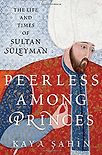
Suleymanname: The Illustrated History of Suleyman the Magnificent by Esin Atil (editor)
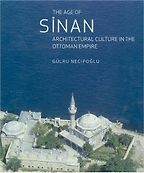
The Age of Sinan: Architectural Culture in the Ottoman Empire by Gülru Necipoglu
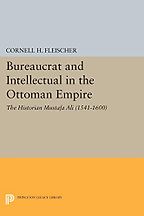
Bureaucrat and Intellectual in the Ottoman Empire: The Historian Mustafa Ali by Cornell Fleischer

Empress of the East: How a Slave Girl Became Queen of the Ottoman Empire by Leslie Peirce
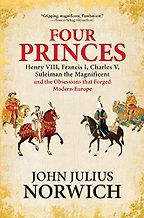
Four Princes: Henry VIII, Francis I, Charles V, Suleiman the Magnificent and the Obsessions that Forged Modern Europe by John Julius Norwich
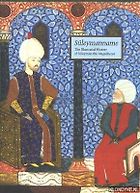
1 Suleymanname: The Illustrated History of Suleyman the Magnificent by Esin Atil (editor)
2 the age of sinan: architectural culture in the ottoman empire by gülru necipoglu, 3 bureaucrat and intellectual in the ottoman empire: the historian mustafa ali by cornell fleischer, 4 empress of the east: how a slave girl became queen of the ottoman empire by leslie peirce, 5 four princes: henry viii, francis i, charles v, suleiman the magnificent and the obsessions that forged modern europe by john julius norwich.
B efore we get to the books, can you just tell us a bit about who Süleyman was and why he’s significant? Why might people be interested in learning—or learning more—about him?
These global transformations are almost always described from a European perspective. Thus, the story of Süleyman is also important because it makes us realize the extent to which major European figures of the time—like Charles V or Francis I—interacted with the Ottomans and responded to them. Studying or reading about Süleyman tells us about this missing chunk in world history, it helps us complete the narrative.
Of course, the Ottomans are not the only non-European dynasty that is often left out. We have the Safavids, the Mughals , the Ming and then the Qing in China. Ivan IV, the czar of Muscovy , who was a close contemporary of Süleyman, is often left out of the narrative as well. Through Süleyman, I wanted to add a crucial component to the account of major global transformations, which is usually told from a Eurocentric perspective.
In terms of Süleyman’s own story, there are various elements that make his life interesting. For instance, he was not predestined to become sultan. Rather, he grew up with the distinct possibility of being killed during a succession struggle. His is the story of someone who grew up in a fratricidal dynastic culture, under the shadow of a violent, overbearing father. He then came to the throne in his mid-20s, as a relatively inexperienced prince. He tried to establish a nuclear family and an intimate life in the middle of the harem. But, because of the restrictions of the dynastic culture in which he lived, he ended up condoning the deaths of a number of his children and grandchildren. He spent the last few decades of his life trying to stay in power, to stay relevant, to construct a legacy that would erase the tensions and problems of his life and rule.
I think there is also an intriguing discussion about human agency versus structure. To what extent could you instigate change in 16th-century society? What was the cost? How much could you change the large structures you were a part of, even if you were at the top of the pyramid?
These are the reasons I think it’s interesting for people who like history to read a biography of Süleyman .
Süleyman was the longest-ruling Ottoman sultan. Is his reign the apex of the Ottoman Empire? Is it at its largest size, during this period?
Süleyman’s rule is seen as the apex of the Ottoman Empire, but not necessarily because of territorial expansion—a couple of Süleyman’s descendants in the late 16th century did expand it further. Under Süleyman, the empire did get close to reaching its largest territorial limits though, occupying today’s Iraq, parts of the Caucasus, Northern Africa and so on.
But his reign is mostly seen as the apex of the Ottoman Empire because of institutionalization. Under Süleyman, there was a critical level of bureaucratization. There was significant legislative activity, which enhanced dynastic law, and supplemented the sharia with different legal elements that made it easier to manage the Empire.
This is a selective reading, though, as I talk about in the conclusion of my book. It is very much conditioned by the political circumstances of the 19th and 20th centuries, when politicians and intellectuals looked to the Ottoman past to find precedents of rational bureaucratic or orderly rule, or military glory. It’s an image that was constructed in bits and pieces in the 19th and 20th centuries.
“He was fairly unknown when he became sultan”
That’s another reason why I wrote my biography. I wanted to situate Süleyman within his period and beyond these posthumous reconstructions. There were a lot of military victories, but there were also a lot of military stalemates. When you look at Süleyman’s intentions and his achievements, you can say that he failed on a number of levels. When we talk about institutionalization, we have to realize this was a very large territorial empire. If there was a crisis in Egypt for instance, it might take several weeks for the local governor to convey the problem to Istanbul to get back a response, of course, if the ship carrying the message didn’t sink or, if you were sending it by horse, the messenger survived the trip. I wanted to talk about the whole thing—the achievements as well as the failures, the dreams as well as the outcomes. I wanted to offer a complex picture as opposed to the simplifications that had been piling up, especially after Süleyman died.
Let’s turn to the books you’ve chosen. Let’s start with Suleymanname: The Illustrated History of Suleyman the Magnificent , edited by the art historian, Esin Atil. What’s this book about?
In the last decades of his life, Süleyman commissioned a work on his reign, and the result is a history in verse, written in Persian, with magnificent illustrations, called the Süleymanname , i.e., the Book of Süleyman . Esin Atil’s study is based on the original. She doesn’t offer a full translation, but I don’t think it is necessary, as the flowery, classicized language would be quite inaccessible for today’s readers. Instead, she offers a long and informative introduction to Süleyman’s reign and the art and culture of the Ottoman elite, then reproductions of all the illustrations in the Süleymanname , accompanied with detailed descriptions and interpretations by a skilled, perceptive art historian. At the end, there’s a very detailed index, a conceptual index. There’s also a dramatis personae -type section where individuals are matched with their depictions in the illustrations. It’s really amazingly done.
This is one of the two best books (the second one we will discuss next) that we have about Süleyman’s attempts at creating his own legacy visually. This is the first one I would recommend because it represents Süleyman’s own view of his legacy at a very difficult time in his life. The composition of the Süleymanname started in the second half of the 1540s, when Süleyman was increasingly feeling the impact of physical illness. He had gout and digestive problems. This was also a time when his sons were beginning to emerge as candidates to the sultanate. Pretty much everybody in the Ottoman realm—as well as the diplomatic observers, such as the French and the Italians—were expecting a succession struggle soon.
It was also a time of reflection for Süleyman. His major military campaigns and his imperialist agenda were very much projects associated with his earlier years on the throne. When he was younger, he had developed this image as a messianic conqueror who was going to bring peace to east and west. By the late 1530s, his ambitious youth projects had not necessarily been failures—they did lead to considerable territorial extension and the expansion of the sultan’s power—but, at the same time, they had led to entanglements with the Safavids and the Habsburgs which looked more and more like stalemates.
The 1540s thus marked a time when Süleyman was becoming much keener on institutionalization and legislative activity. As I mentioned before, he had always been careful about his image, but this was also the time that he started focusing on—to use an expression that my wife came up with, which I love—his self-curated legacy. That’s what he was doing, and the Süleymanname was a part of that attempt.
The original manuscript is in the Topkapi museum in Istanbul, is that right?
Yes, it’s in the Topkapi Palace Library. There’s only a single copy and the manuscript is intact, which is unusual. Some people think this shows it had limited readership. I think it was widely read, but by the innermost circle. It must have been seen as one of the crown jewels of Ottoman dynastic culture throughout the centuries by people who saw it.
The manuscript was illustrated and inscribed by a team of really accomplished artists and artisans. It took around 10 years to finish. I’m fairly certain Süleyman, who knew Persian very well, discussed the text with the author whose job it was to write the versified history. This was a kind of group project in which the sultan and people close to him gave input to a large number of artists and artisans, who produced a striking cultural and political statement.
What did Süleyman emphasize as he curated his own legacy? Are the military campaigns and the army getting to Vienna the most important? Or is the book more about charitable activities and non-military achievements?
The book was written from the late 1540s to the late 1550s. Chronologically speaking, it stops around 1555 so it doesn’t cover Süleyman’s last decade on the throne. Süleyman’s architectural legacy became more visible in the last decade-and-a-half of his life, and that’s not visible in the Süleymanname .
The Süleymanname starts with Süleyman’s arrival on the throne. By the way, it skips over the first 25 years of Süleyman’s life and, ever since, everybody else writing about his life has done the same. That’s another thing I wanted to correct. Nearly half my biography of Süleyman is about the Ottoman context as well as his childhood, and his youth. The Süleymanname then gives a quick description of the Ottoman Empire’s system of rule. It talks about the imperial council and the military power of the sultan. It’s almost a potted institutional history.
“There were a lot of military victories, but there were also a lot of military stalemates”
But the bulk of the book is about Süleyman’s exploits, him going on campaign, besieging cities, hunting alone or with his sons. Other important events are depicted as well, such as the flooding of the army camp during a campaign, etc. Overall, the image that emerges from the book is of Süleyman as conqueror, hunter, gentleman. Süleyman at court listening to music, Süleyman receiving ambassadors from Europe or from the Safavids, Süleyman giving an audience to the famous pirate Barbarossa. All that courtly stuff. A masculine, paternalistic image emerges. There’s almost nothing about charity. It’s very, very striking.
Let’s move on to the architecture book you’ve recommended. It’s called The Age of Sinan: Architectural Culture in the Ottoman Empire and it’s by Gülru Necipoglu , another Turkish American art historian, who is a professor at Harvard. Tell me about this book.
This book is a study of the life and work of Sinan, who was chief architect and who built most of his projects under Süleyman. He was probably of Armenian origin, from Central Anatolia. Ottoman agents would go to the provinces and select children for Ottoman service. This Armenian child became one of the most defining figures of Ottoman culture to this day. He was the most prolific architect of the entire span of the Empire. He was also extremely gifted. He developed both building methods and standards and new aesthetic styles for mosques large and small, for bridges, for convents, for soup kitchens.
This book is about Sinan’s life and work. It gives an exhaustive list of everything he ever built and looks at his relationship with members of the Ottoman elite. Süleyman as well as his wife and daughter play a very large role in the book, as does the son who succeeded him as sultan.
Sinan’s most prolific period was during the reign of Süleyman. Using architecture, Süleyman was creating very tangible signs of his presence, his persona, and his charity. His wife had started earlier, in the late 1530s. Süleyman started in the mid to late 1540s. He dotted the entire realm with these architectural signs, these very visible buildings that told people about the sultan. These buildings reflected the image Süleyman wanted to leave behind. It’s an image that doesn’t emerge in the Süleymanname , the illustrated history book. The architectural building program projects the image of a charitable sultan who catered to all the needs of his subjects. If you look at his building complex in Istanbul, for instance, the central piece is a mosque, but it also has a library, it has a bathhouse, it has a caravanserai or guesthouse. It has a soup kitchen that distributes food to people. You can go to the sultan’s soup kitchen and have a free meal. These are all free services.
If you look at the locations, a related picture emerges. Jerusalem was a major recipient of Süleyman’s charity. The walls of Jerusalem, which are still visible today, were built under Süleyman. Süleyman’s wife had a large soup kitchen and fountains built in Jerusalem. Süleyman is the Arabicized/Turkicized form of Solomon. People did call him the second Solomon, the Solomon of our age, and it is quite likely that Süleyman and his wife wanted to underline those Solomonic connections through their charity in Jerusalem. He also had a lot of charitable works in Mecca and Medina. On the way there, in Damascus for instance, he had waystations built for pilgrims.
The architectural legacy projected the image of a charitable, pious, devout, mature, sultan. It supplemented the image found in the Süleymanname. The best way to learn about all that and also about the life of this extremely talented, creative, wonderful artist, Sinan, is by reading this book.
Some of Sinan’s bridges and mosques are beautiful, does the book have lots of pictures?
Let’s go on to the next book, which is about the Ottoman historian Mustafa Ali: Bureaucrat and Intellectual in the Ottoman Empire.
This book is by my dissertation advisor, Cornell H. Fleischer [1] , but that’s not the reason why I chose it. This is one of the most accomplished books ever written about the Ottoman Empire. It revolves around the life of an ambitious, interesting character. Mustafa Ali was born in 1541. He grew up, went to school and got his first position as secretary to an Ottoman prince during the reign of Süleyman. He was 25 when Süleyman died. So he was someone who was very much imbued with the ethos of Süleyman’s reign: meritocracy, the rule of law, and bureaucratic rationality.
Mustafa Ali became a very frustrated person later in life because, like many others, he realized that the ideals of his youth did not correspond to reality. He gave voice to his frustration through writing. He composed a large number of works: histories, poetry, works on morals, etiquette, etc. He emerged as the voice of discontent about the loss of meritocratic ideals, about the failures of the Ottoman system to incorporate gifted people into it and the pitfalls of patronage. He also realized that some of the problems he dwelled upon might have started or already existed under Süleyman.
This is a meticulously researched and beautifully written biography of a prolific intellectual from the second half of the 16th century, but also a terrific study about how Süleyman’s ideals and Süleyman’s legacy were seen and interpreted during his life and shortly after. The book also has sections about historical consciousness and history writing, the emergence of a bureaucratic identity and bureaucratic consciousness among these cadres of madrasa-educated secretaries. We get to see how a particular type of Ottoman identity—not only for the uppermost elite, but for other educated people, upper middle-class people in today’s terms—was ingrained in this particular period.
Finally, in this study, we also see the emergence of critical voices within Ottoman society, or at least within the elite. This is a perspective that is usually lacking in traditional understandings of the Ottoman Empire, which see Süleyman’s time as its apex. Mustafa Ali started with that assumption but realized that it really was not the case. It was an interesting moment of awakening for him.
I saw Mustafa Ali’s books include one which is called The Essence of History in English, which is a great title. Are the books Mustafa Ali himself wrote interesting and accessible to read?
We’re now at the fourth book you’ve recommended which looks really interesting. This is Empress of the East by historian Leslie Peirce, which is all about Süleyman’s wife, Hürrem. Tell me about her.
Süleyman’s wife entered the Ottoman orbit as a slave woman. Ottoman dynastic reproduction when Süleyman was born relied on sexual intercourse between an Ottoman prince and a concubine. In earlier centuries, Ottoman princes had married princesses from neighboring dynasties, both Muslim and Christian. But as the Empire became larger, and as the power of the sultan kept increasing, it seems that there came a turning point. Concubinage had existed before, but at some point in the early to mid-15th century, the Ottomans decided to reproduce the dynasty only through concubines in order to make sure that the princes become purely Ottoman products.
This is very similar to the devşirme system, which I discuss in the book and through which the architect Sinan was taken into Ottoman service. Ottoman agents would go around the countryside and select good-looking, smart-sounding, early adolescents, and take them into Ottoman service through conversion and education. They would be given a new name. Even though some of them maintained relationships with their family members, they were purely Ottoman products, and they remained the slaves of the sultan. So slavery was used both to create this loyal service class and to create Ottoman princes. According to the sharia, if a Muslim man has a child by a slave, whether Muslim or non-Muslim, that child becomes a Muslim, and is recognized as a free person.
So Süleyman’s wife was taken into the Ottoman realm through slavery. There are discussions about when she met Süleyman—it was probably after he became sultan. She may have been one of the slave women who was given to Süleyman as a gift upon his accession, or she may have been taken into his household during his time as prince shortly before he became sultan.
She came from what is now Ukraine, right?
Yes, she came from that Eurasian steppe which was a major hunting ground for slave merchants at this time. The numbers are horrifying—a couple of million people were enslaved, according to some estimates. And yet, it’s very rarely part of the discussion. For both historiographical reasons and understandable political reasons there is much more focus on Africa and slavery. Also, past Ottoman historians have been quite ‘successful’ in trying to erase the legacy of slavery. That’s why I’m bringing all these different pieces into discussion, as I do in my book. For instance, I point out in the introduction, ‘You think Süleyman was a guy who did interesting things? Well, he was surrounded by slaves. Even his wife was a slave, even though he liberated her at some point.’
Hürrem would probably have been converted to Islam before she entered Süleyman’s household. It’s likely that she received some education in the household. We know through her correspondence that she knew how to read. She may have known how to write. I looked at letters by Süleyman’s mother, who was also a slave. The writing is obviously that of someone who has learned to write late in their lives and Hürrem may have been the same.
Süleyman had relationships with concubines before he met Hürrem. He had children, many of them dying in infancy, but at least one son from another concubine survived into adulthood and was eventually executed.
“Competition was required to survive in this environment”
But after Süleyman met Hürrem, he became increasingly monogamous. We don’t know what the attraction between the two was. There’s no documentation about how they met or what they felt about each other. But we know from the reports of diplomats in Istanbul that Süleyman formed a monogamous family in the midst of the harem, which was a system that was established to make sure that a prince had sex with different concubines and had children with them. When a concubine produced a son, the prince was supposed to move on to the next concubine. I think this was a crude Ottoman understanding of evolution. They had an idea of something like a gene pool, which you could extend by producing princes from different concubines.
Süleyman didn’t want that. He became monogamous in the early years of his sultanate. He had an interesting relationship with women because we also have indications that he had a close relationship with his mother and his sisters. Even before his wife became a visible presence in the life of the Ottoman dynasty, Süleyman supported his mother, and gave her significant resources to create a charitable complex to her own name. Süleyman tried to create personal and intimate relationships that have left behind traces, which tells us that these were significant relationships for him.
I started reading the book and it seemed like a very clear and accessible account, by a serious historian, of Hürrem’s life and what we know about her.
By all accounts, Hürrem was an extremely gifted, intelligent person. We have her letters. She was someone who was capable of great intimacy, who became a refuge for her husband. Süleyman was very conflicted. He lived in the midst of this very violent, masculine dynastic culture. But he also displayed an element of vulnerability—in his poetry, for instance, that’s quite visible. His wife became a companion for him. She also became an informant. When he was on campaign, they corresponded. She told him about the gossip in the palace and around Istanbul; she was his confidant.
Hürrem also started creating her own architectural legacy and I think Leslie Peirce is right that she was the first female member of the Ottoman dynasty to create a visible architectural legacy in the capital city itself. We have examples in the provinces, but it was the first time a woman of the dynasty was building a mosque complex and soup kitchen in Istanbul to her name.
Hürrem was one of Süleyman’s biggest supporters. Süleyman manumitted her and she died as a free person in 1558. Süleyman had multiple children by Hürrem, including four boys. Immediately after she died, her two surviving sons entered into a deadly succession contest that determined the tenor of the last years of Süleyman’s reign.
We’d better get on to the last book, which is by John Julius Norwich and is called Four Princes: Henry VIII, Francis I, Charles V, Suleiman the Magnificent and the Obsessions that Forged Modern Europe. You mentioned at the beginning that people study Europe, and they don’t study Turkey. I studied history in the UK, and I can tell you that we studied Henry VIII two or three times, but even Francis I and Charles V didn’t make the cut.
Yes, this is a very important point. Looking from the Middle East, Eurocentrism looks unified, but there are also these nationalist historiographies. If we were doing this interview in French, you would be telling me that you studied Francis I, Charles V was the enemy, the Turks reluctant allies and Henry was a madman who tried to invade France. There’s also an Islamocentrism we have to push back against. If you study in the Middle East, you rarely get to hear about any of these European characters, or even the Safavids. They are shadowy presences on the margins of the Ottoman Empire. But Charles V was in Süleyman’s thoughts every day—and vice versa—for three decades.
This is a book that does push against those nationalist understandings of the 16th century. For the British reader, Norwich does a great job because he talks about the limitations of a British understanding of history. He wrote the book when he was older, and wanted to revisit and reconsider his own education in the 1950s. Things may be better now, but he says they would rarely hear about Charles, and when they did hear about him it was mostly as him being a Spaniard, which he wasn’t. He was from Burgundy. Charles learned to speak Spanish because he had to, but he communicated in French.
The book is very readable, and Norwich does a wonderful job of identifying, beyond national concerns, the kinds of challenges that these four figures faced in a 16th-century environment. Norwich was not a professional historian and he tells their stories from a personal perspective. There’s a risk to his book because it places the individual person at the center, but it’s a great introduction to a global understanding of 16th-century history. As you’re reading you notice, ‘Oh! this happened to Süleyman. Then the same thing happened to Francis I. How come?’ And you start thinking about the dynamics of the period.
These people lived in the same space and they—or their agents—interacted in a variety of ways. They lived at a time after the Mongol invasions, after the Black Death, after the feudal violence of late medieval Europe, when you saw the consolidation of new kinds of empires and states. They lived at a time when, as a result of the widespread use of gunpowder, warfare became much more costly and more violent. There are a number of threads that unify these rulers.
As I said, Norwich is not a professional historian and the bibliography is very short. There are a couple of mistakes in the Ottoman sections. But it’s entertaining to read and I enjoyed it tremendously. He was a great writer. It shows that with the right mindset, you don’t have to know Ottoman Turkish to have a decent understanding of the Ottomans.
Norwich is a good starting point against Eurocentric as well as nationalist understandings of the period and it pulls in the reader interested in biography and in history into a much wider understanding of the 16th century. It creates curiosity. It’s a really well-done book in that regard.
Can you give some examples of things these rulers were pushed into, where you think, ‘Oh, that’s the same, even though they were presiding over four very different societies’?
They all had money problems. They had issues with dynastic reproduction, they had issues with their children. They had health issues. They burned out as a result of their imperial ventures. When you go beyond the personal and the national, you start seeing, structurally, what it entailed to be a ruler. Also, what it meant to live in that particular period, as a member of a wealthy, military-political elite that was constantly in competition. It was very male, very patriarchal, and very paternalistic and that played an important role in the lives of all of them.
This was a time of state building and bureaucratization and new kinds of warfare. They were competing against each other; competition was required to survive in this environment. They also had to compete with members of their elite and aristocracies because, at a time of state building, the power of the crown and of the dynasty was increasing. They had all sorts of problems with how to incorporate local elites and aristocracies.
Süleyman was luckier than the others because the Ottomans had exterminated local aristocracies and created their own upper elite through conversion, this service class that was mostly made up of slaves. But Süleyman still had to manage that class, to keep them happy. He had to pay them on time because they received stipends. He couldn’t keep them on campaign too long because they would rebel. They were elite soldiers. Charles had the same problems: the Spanish cities rebelled. Henry had the same problems and Francis had the same problems.
As you think about the individuals as well as the time and society they lived in, you develop more of a historical understanding in the scholarly sense.
That’s so interesting. It makes me a bit more charitable towards Henry VIII because I’ve always been very, very angry with him, thinking, ‘Why did he kill his wives? What a bastard!’ Now I can see that maybe, compared to other things going on at the time, he wasn’t quite as bad as he seems from a modern perspective.
That’s a great point. My wife Rita and I have been discussing these things. We were in Upsala for almost a year in the middle of the pandemic, at the Swedish Collegium for Advanced Study, while I was writing this biography of Süleyman. I wrote it, Rita read it, we edited it together a number of times. We had long conversations wondering, ‘What kind of a person are we looking at? Am I going to have some ethical second thoughts after publishing this biography?’ We decided not to over-psychologize these characters, either for good reasons or bad. Otherwise, you think, ‘What a decent man Süleyman was! He spent millions of gold coins in charitable works.’ Or ‘What a bastard Süleyman was! He had two of his sons and many grandchildren executed.’
Henry had two of his wives executed; Süleyman had his own children and grandchildren executed. As rulers they were compelled to do those things, but they also did it to maximize their power. That is the moment where individual will breaks against tradition. Henry could have said, ‘OK, no male heir, that’s fine. The House of York can come back to the throne after I die.’ He didn’t do that. That’s the nasty part. Süleyman didn’t say, ‘You know what, I’m going to designate one of my sons as the next sultan.’ He didn’t do that. They were stuck in these structures that also shaped them. It was partly their own fault, but it partly wasn’t. They were born into this dynastic, male environment. By the time they came to the throne, they had already been molded so much it was impossible for them to change those major structures. It’s one of the tragic aspects of their lives. Süleyman is credited with creating a new bureaucratic system which was revolutionary, but he couldn’t change the succession practice to save his own sons. He didn’t even try.
[1] Note from Kaya Şahin: “ Shortly after this interview, we lost Cornell H. Fleischer. During my training with him and later, in many conversations, the five books discussed above were often mentioned. Cornell’s legacy lives in his book and articles and through the work of his students.”
June 5, 2023
Five Books aims to keep its book recommendations and interviews up to date. If you are the interviewee and would like to update your choice of books (or even just what you say about them) please email us at [email protected]
Support Five Books
Five Books interviews are expensive to produce. If you've enjoyed this interview, please support us by donating a small amount .
Kaya Şahin is Professor of History and the Executive Associate Dean of the Hamilton Lugar School of Global and International Studies at Indiana University.
We ask experts to recommend the five best books in their subject and explain their selection in an interview.
This site has an archive of more than one thousand seven hundred interviews, or eight thousand book recommendations. We publish at least two new interviews per week.
Five Books participates in the Amazon Associate program and earns money from qualifying purchases.
© Five Books 2024
- Sultan Travels
Sultan Travels Bus Booking
Search sultan travels bus tickets, sultan travels bus routes & timings.
From INR 1599
Official Sultan Travels Booking partner

24*7 customer service(Call & Chat)

3.6 Crores users trust us

Assured seat of your choice

2,00,000+ bookings per day World's largest online bus ticket booking platform

Secured and Verified payment options
Table of Content

Frequently Asked Questons on Sultan Travels
Sultan travels bus ticket booking.
Sultan Travels is popular due to its adequate, safe and on-time bus services. Several types of buses run by Sultan Travels help in connecting different routes. Sultan Travels proficiently strives in maintaining its quality and delivering an affordable bus travel experience in the long run.
Sultan Travels Bus Services
Sultan Travels has a good frequency of buses that run all throughout the day promoting safety and comfort of passengers. Sultan Travels staff are known for assisting passengers consistently. Travellers prefer Sultan Travels due to its convenient and on time bus services across various city routes.
Sultan Travels Bus Types
The various types of buses run by Sultan Travels are:
- NON A/C Sleeper (2+1)
Book the cheapest online bus tickets with redDeals
redDeals are discounts offered by top bus operators exclusively on redBus. The redDeal discount amount which ranges from a minimum of 5% to a maximum of 25% is in addition to any other discount applicable at the time of booking your online bus ticket. So with redDeals you can be assured of not just safe & comfortable travel but also of the cheapest travel option at any time. Different types of redDeals offered by operators include Return trip offer, Early bird offer, Last minute offer, Trial offer, Festive/Holiday offer and more
Sultan Travels Online Bus Ticket Booking on redBus
Booking Sultan Travels online bus tickets from redBus is fast and simple. You can book Sultan Travels ticket by choosing online secured payment options at any time. Every traveller is eligible to ongoing offers and cash backs.
Unlock Unbeatable redDeals for Sultan Travels Bus Tickets
Unlock Unbeatable Exclusive redDeals! 20% OFF
3717 Deals 1558 Bus Operators 331887 Routes
Bus Amenities
Charging Point
Reading Light
Emergency Contact Number
Top Routes for Sultan Travels
- Sultan Travels Kalaburagi to Mumbai
- Sultan Travels Kamalapur (gulbarga) to Mumbai
- more >>
Top Cities for Sultan Travels
- Sultan Travels Bangla (basavakalyan)
- Sultan Travels Mahagaon Cross
- Sultan Travels Humnabad
- Sultan Travels Solapur
- Sultan Travels Umerga
- Sultan Travels Kamalapur (hampi)
- Sultan Travels Kalaburagi
Other Operators
- Bajrang Travels
- New marudhar and rajswer travelsp
- Ekta Tours and Travels
- Ram Tours And Travels
- Neem Travels
- SREE GOWRI TRAVELS
- Vidhan Tour Travels
- Balaji Tours and Travels
- Blue Baloon
- BSP Transports
- Four Hans Travels HO
- Shankara Travels
- Lalan Travels
- Raja Ranchhod Travels
- Baldev Travels
- Raviraj Travels
- Babu Travels
- Krishna Parshwanath Travels
- Sana Travels
- SKYNET Travels
Other Operator City
- Kamalapur (gulbarga)
Other Station Routes
- Ghormara to Sainthia Trains
- Ghosunda to Soniana Trains
- Ghormara to Sankarpur Trains
- Ghormara to Shikaripara Trains
- Ghosunda to Rajosi Trains
- Ghoradongri to Kalmeshwar Trains
- Giddarbaha to Inchhapuri Trains
- Giddalur to Kondapuram Trains
- Ghutku to Vikramnagar Trains
- Ghorawadi to Dehu Road Trains
- Giddarbaha to Bawani Khera Trains
- Giddalur to Gudlavalleru Trains
- Ghutai to Bargarh Trains
- Ghosunda to Ajmer Jn Trains
- Ghosunda to Madar Jn Trains
- Ghosunda to Singwal Trains
- Ghutai to Kulpahar Trains
- Ghosunda to Bandanwara Trains
- Ghutai to Bharat Kup Trains
- Ghosunda to Bhilwara Trains
Train Seat Availibitlity
- 04152 Seat Availability
- 14014 Seat Availability
- 17005 Seat Availability
- 11017 Seat Availability
- 18450 Seat Availability
- 15631 Seat Availability
- 22702 Seat Availability
- 22226 Seat Availability
- 22738 Seat Availability
- 20808 Seat Availability
- 22692 Seat Availability
- 12195 Seat Availability
- 18426 Seat Availability
- 13012 Seat Availability
- 12350 Seat Availability
- 12520 Seat Availability
- 15098 Seat Availability
- 16511 Seat Availability
- 14213 Seat Availability
- 22324 Seat Availability
Train Routes
- Delhi to Damoh Trains
- Kollam to Thalassery Trains
- Rishikesh to Delhi Trains
- Delhi to Kathua Trains
- Delhi to Hijilli Trains
- Guntur to Vizianagaram Trains
- Tirupati to Gudivada Trains
- Kavali to Tirupati Trains
- Chengannur to Kannur Trains
- Delhi to Delhi Trains
- Kharagpur to Chennai Trains
- Daund to Hyderabad Trains
- Kozhikode to Salem Trains
- Raipur to Champa Trains
- Shoranur to Kottayam Trains
- Jodhpur to Ramdevra Trains
- Jaipur to Chennai Trains
- Jammu to Bhatinda Trains
- Anakapalle to Rajahmundry Trains
- Deoria to Delhi Trains
Railway Information
- Train Ticket Booking
- Train Between Stations
- Train Seat Availability
- Train Running Status
- Train Schedule
- Train Coach Position
- Tatkal Ticket Booking
- Premium Tatkal
- Current Reservation
Top Train Routes
- Coimbatore to Chennai Trains
- Chennai to Bangalore Trains
- Chennai to Coimbatore Trains
- Bangalore to Chennai Trains
- Pune to Mumbai Trains
- Ahmedabad to Surat Trains
- Mumbai to Pune Trains
- Madurai to Chennai Trains
- Hyderabad to Vijayawada Trains
- Mysore to Bangalore Trains
- Bangalore to Mysore Trains
- Surat to Ahmedabad Trains
- Chennai to Erode Trains
- Chennai to Madurai Trains
- Vijayawada to Hyderabad Trains
- Visakhapatnam to Vijayawada Trains
- Visakhapatnam to Hyderabad Trains
- Chennai to Tiruchchirapali Trains
- Erode to Chennai Trains
- Hyderabad to Visakhapatnam Trains
Other Train Routes
- Mumbai to Goa Trains
- Delhi to Katra Trains
- Delhi to Jaipur Trains
- Bangalore to Mangalore Trains
- Delhi to Amritsar Trains
- Delhi to Chandigarh Trains
- Delhi to Haridwar Trains
- Delhi to Mumbai Trains
- Gaya to Patna Trains
- Jaipur to Delhi Trains
Quick access
Superior live tracking
24,90,000 reviews
1,80,900 reviews
Scan to download
Download the App on
Top Bus Routes
- Bangalore to Chennai Bus
- Hyderabad to Bangalore Bus
- Pune to Bangalore Bus
- Mumbai to Bangalore Bus
- More >>
- Hyderabad Bus Tickets
- Bangalore Bus Tickets
- Chennai Bus Tickets
- Pune Bus Tickets
Top RTC Bus Types
- Amaravathi Bus
Top Operators
- No 1 Air Travels
- YBM Travels(BLM)
- Sri SMS Travels
- Svkdt travels
- RKT Tours and Travels
- City Travels
- Sangitam Travels
- Tranz king travels
- Vetri Travels
- Chartered Bus
- V Kaveri Travels
- Kallada Travels (Suresh Kallada)
- Chalo Bus (Sutra Sewa)
- Krish Travels
- (SBLT) Shri Bhagiyalakshimi Travels (MAARA)
- RKK Travels
- City Land Travels
- Laxmi holidays
- Orange Tours And Travels
- Parveen Travels
- Konduskar Travels Pvt. Ltd
- Sri Krishna Travels
- Shyamoli Paribahan Pvt Ltd
- Morning Star Travels
- IntrCity SmartBus
- MRM Travels
- SRS Travels
- Rathimeena Travels B
- Sugama Tourist
- Go Tour Travels and Holidays
- VRL Travels
- GreenLine Travels And Holidays
- Neeta tours and travels
- Bharathi Travels
- Raj Ratan Tours And Travels
- Royal Travels
- National Travels CHN
- Jabbar Travels
- Saini Travels Pvt. Ltd.
- Hans Travels (I) Private Limited
Sultans Trail
A european cultural route.

Welcome on the Sultans Trail

The Sultans Trail is a long-distance hiking and cycling trail from Vienna to Istanbul , with a length of 2500 km. It takes an average person 15 weeks to complete the entire Sultans Trail. Cyclists need around 4 weeks to do so.
Nature, History and Culture
The trail runs through amazing nature and idyllic old villages with Ottoman, Habsburg, Byzantine, Roman and Communist heritage, from archaeological sites, old monasteries to brutalist architecture. As many civilizations had their influence you will be surprised with this rich mishmash of cultures.
When you are interested in nature, history and culture you will love this old route to Istanbul. The different trade routes, wars and rules have all left their traces, this route is full of memories of the ancient past that you can find in the most unlikely places.
East meets West
Contrary to its past, then a path of conquest, the Sultans Trail nowadays is a path of peace, a meeting place for people of different faiths, cultures and backgrounds. That’s why we choose consciously to let this Sultans Trail, a European Cultural Route, run back from Vienna to Istanbul, from conquest to “collaboration in diversity”.
Together with the help of many ever so kind people, councils, and of course OpenStreetMap, we established a respectable hiking trail through eight countries: Austria, Slovakia, Hungary, Croatia, Serbia, Bulgaria, Greece, and Turkey.
Volunteers The Sultans Trail project always welcomes people who want to join or volunteer . You can contact us here or by email to [email protected]
- You can view pictures we made along the way and the videos of events we organized to get the Trail marked with GR-codes and stickers we have developed to mark the Sultans Trail.
- In de spring of 2020 the BBC showed three wonderful episodes on BBC2. For those who missed it here are the trailers. For the full broadcasts, it is only possible to see it with a BBC subscription. We thank all employees of CCTV and BBC for the magnificent” Pilgrimage: Road to Istanbul
Work in progress
In the meantime, there are many people working on:
- travelguides
- the writing and editing of our monthly newsletter
- updating the website
- fine-tuning the details in OpenStreetMap and
- updating the GPS track, website and media .
- Evolving in the Sultans Trail App (Android),
- a downloadable Information Packet (Android, Apple and Garmin) and travel guides
Recently we had three wonderful episodes on BBC2, for those who missed it here are the trailers. For the full broadcasts, it is only possible to see it with a BBC subscription. We thank all employees of CCTV and BBC for the “magnificent” Pilgrimage: Road to Istanbul
travelsultan

Paris to Bordeaux
Most destinations.
“The world is a book and those who do not travel read only one page.” ― Augustine of Hippo
America (3)
Indonesia (3), australia (3).

History Ancient history and settlement. Main article: History of the Maldives § Early Age. The first Maldivians did not leave any archaeological artifacts. Their buildings were probably built of wood, palm fronds and other perishable materials, which would have quickly decayed in the salt and wind of the tropical climate. Moreover, chiefs or headmen did not
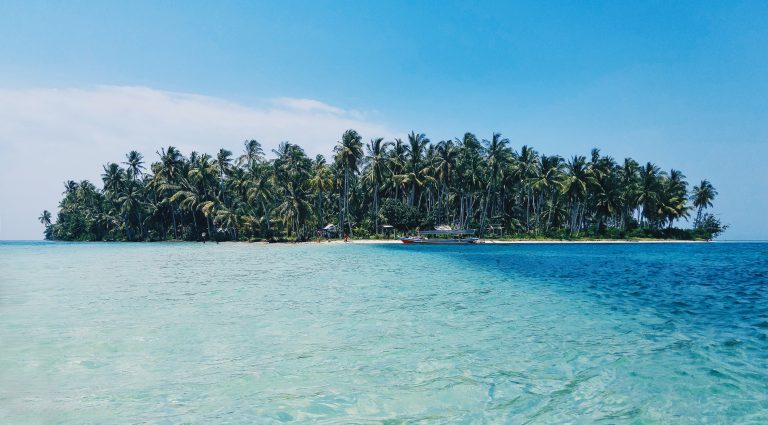
Featured Tours
check out our best promotion tours!
Maldives Adventure Tour
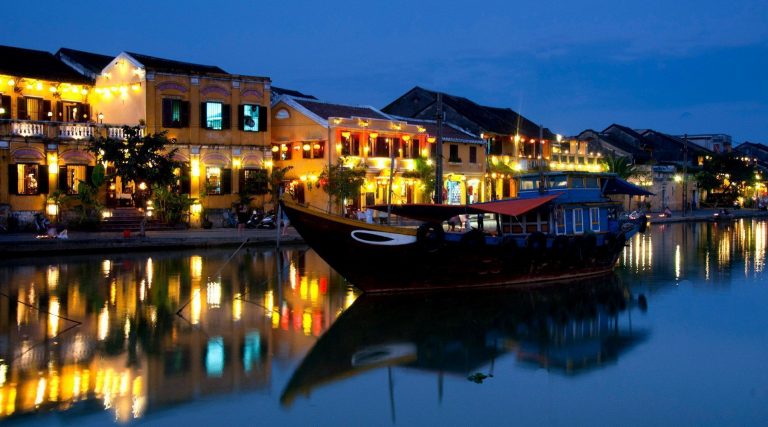
7 Days South – Central of Vietnam
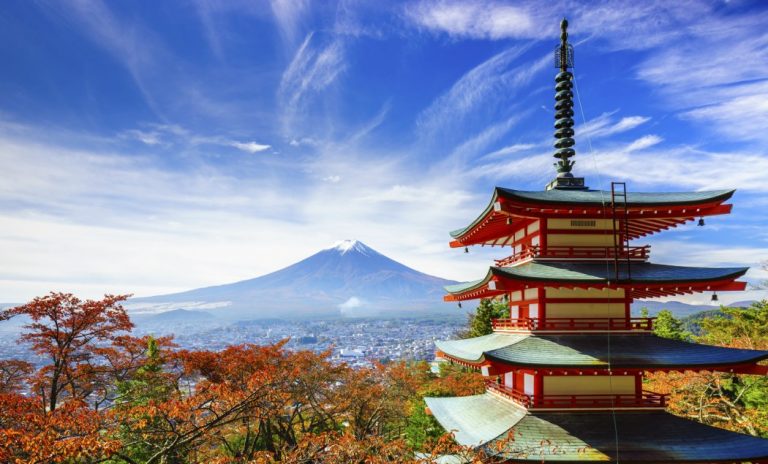
Japan on a Shoestring

Polynesian Spirit
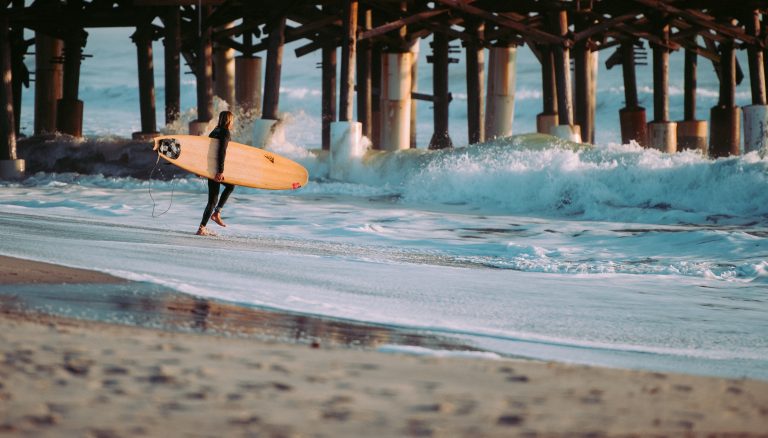
Surfers Private Charters
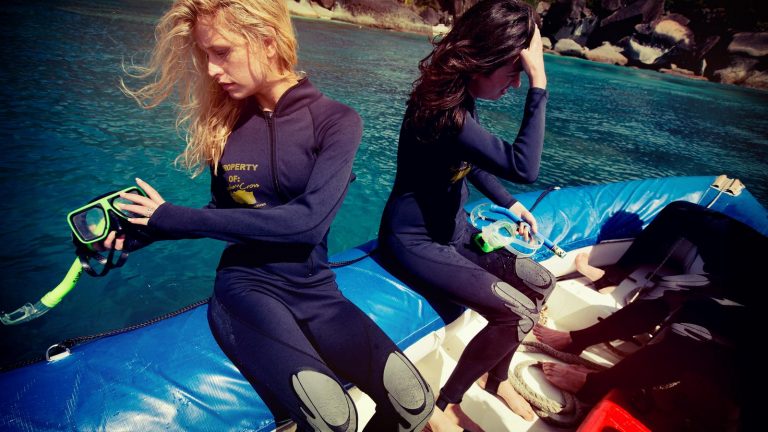
Brisbane to Cairns Experience
Why travel with travelsultan, go travel this summer.

Bergen & Stavanger
Travel tips.
checkout latest news and articles from our blog

Views of the Grand Canyon
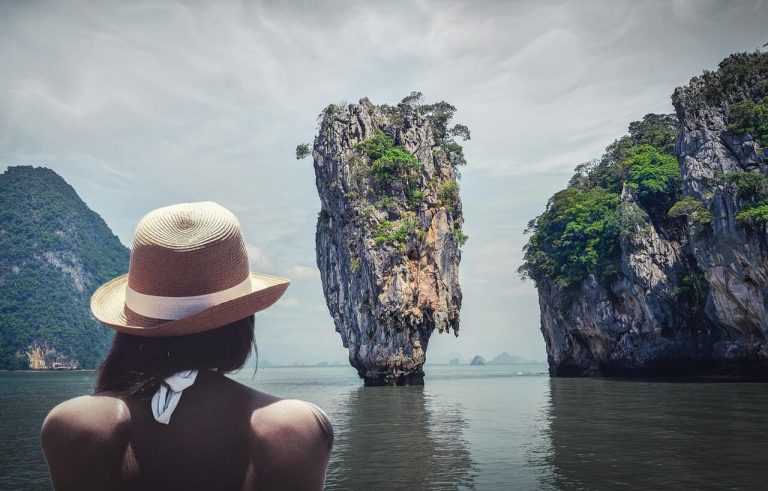
A Lifetime of Hope and Regret

The Best Lesbian Travel Blogs

CUBA Vacation Packages
August 1, 2023

ArriveCAN & Registration Abroad

Toronto/Montreal/Vancouver to ISTANBUL (Non-Stop)
June 9, 2023
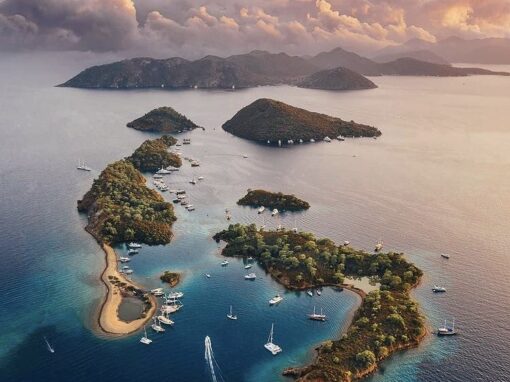
Canada to TURKEY

Canada to ALBANIA
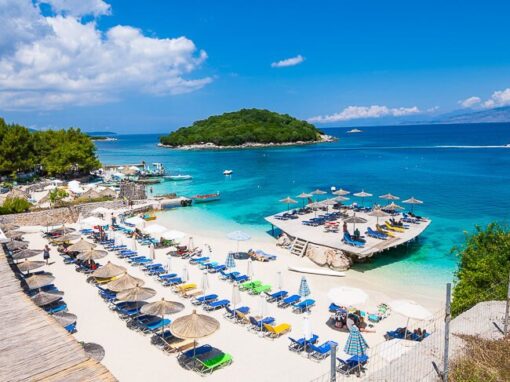
Canada to KOSOVO
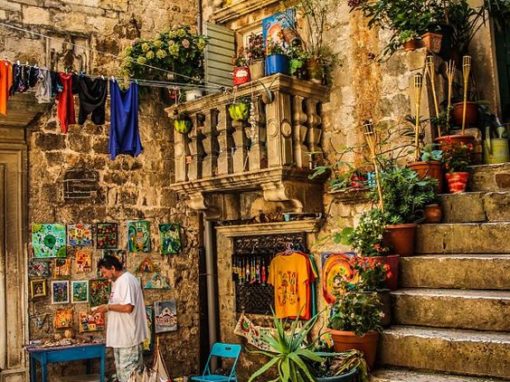
Toronto to CROATIA
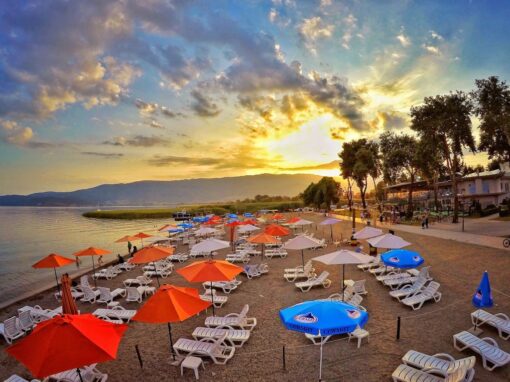
Canada to N.MACEDONIA
Please feel free to contact one of our multicultural travel consultant for your all travel needs., travels & tours, get your travel insurance, sultan travel, tüm seyahat ihtiyaçlarınız için her zaman hizmetinizde., why waste time for parking, get all news , me ne vendlindja është më afër.

Room 1 1 Guests Edit
Book your next adventure.

Get the Free Booksultan App
Find and book cheap flights in your smartphone and get more from Booksultan App..
popular destination

About Book Sultan
Sultan Travel Agencies is one of the largest travel distributors in Kuwait. Established in 1984, Sultan Travel Agency has over 35 years of experience, making it one of the few leading travel management companies that are recognized and trusted in Kuwait today.
We derive together each day to fulfill a promise of offering the single most comprehensive travel experience to users, through the best Mobile and Desktop applications. With intuitive services that have the largest selection of flights, hotels and Packages, we keep customers at the center of everything we do.
Pack and travel where your heart points to, we have the best Flight and Hotel deals for you. Get best discounts on Flight and Hotel bookings for your happy vacations / Family / Business trip.
Flight, Hotel and Package bookings are designed, customized and crafted to meet the needs of each valued customer. Avail great offers, Exclusive deals, Instant discounts and Updates on your flight status.
Sultan Travel Agencies employs some of the best travel industry professionals in Kuwait today. Our multi lingual Travel Advisors are at the top of their game with their industry expertise and are well connected to a regional & world-wide network that enables them to meet all their customers’ travel requirements.
“A STRONG AND TRUSTED TRAVEL BRAND – BOOKSULTAN.COM FROM SULTAN TRAVEL AGENCY.”
Why Choose BookSultan?
Best price guaranteed.
We guarantee you to get the best deals and services for all your flight and hotels.
Safe & Secure
Your safety is our priority with 100% secured payments
Customer Support
Professional multi lingual English & Arabic customer support team ready to serve 24/7.
Best Travel Offers
Plan your trip with booksultan.com– a platform for cheap travel solutions.
Booksultan.com is a reliable travel agent of Kuwait, which offers great deals on air tickets. Book flights for all destinations across the world at the lowest airfares with us. As one of the leading travel portals of Kuwait, we constantly endeavor to make your vacation memorable. So, why to go anywhere else? Call us to save big on all kinds of travel products and services and have a memorable travel experience in a small budget. We believe in creating awesome vacations for our clients through customized holiday packages & tours. Enjoy great saving on flights, hotels and holiday trip with Booksultan.com.
Cheap flights are available at Booksultan.com, one of the leading travel portals of Kuwait. The company offers great discounts on flight tickets. Being a reliable name in travel industry of Kuwait, we focus on providing smooth flight booking experience to our customers. So, book air tickets at the lowest airfare by planning your trip with us.
If you want to book your plane tickets at lowest price and looking for transparency in air ticket pricing, we are here to serve you with best possible offers. You can avail the best flight ticket booking deals for all major carriers with us. So, go for a journey of your preferred destinations with the best airfare discounts.
Is it cheaper to book flights last minute?
There is a popular belief that if you book flights in advance, your air tickets will be cheaper. However, contrary to the popular belief, booking airline tickets late is often cheaper. As per the research, flight tickets are generally cheaper if booked three weeks before departure than tickets booked 6 months ahead. But this is not necessary. The price of flights fluctuates daily or even hourly in various cases. Many times, it changes due to the increasing demand of a particular route by the passengers. So, sometimes flights get cheaper while traveling closer to the travel date and in some cases, it gets expensive. We are here to help, checking flights on different dates is easier with Booksultan.
Explore More
- Top Airlines
- Top Hotel Deals
- Top Flight Routes
OR LOGIN WITH
Forgot Password
Visa enquiry.

IMAGES
COMMENTS
About Book Sultan . Sultan Travel Agencies is one of the largest travel distributors in Kuwait. Established in 1984, Sultan Travel Agency has over 35 years of experience, making it one of the few leading travel management companies that are recognized and trusted in Kuwait today.
About Book Sultan. Sultan Travel Agencies is one of the largest travel distributors in Kuwait. Established in 1984, Sultan Travel Agency has over 35 years of experience, making it one of the few leading travel management companies that are recognized and trusted in Kuwait today. We derive together each day to fulfill a promise of offering the ...
First and last departures. 8:20pm — 8:20pm. Average duration. 2h 46m. Minimum price. $34. Busbud helps you easily search and browse through different Sultan Travel fares to find the cheapest Sultan Travel bus tickets. View different Sultan Travel bus schedules and Sultan Travel ticket prices to find a bus based on your traveling needs.
🚌 Book Sultan Travel bus tickets online with 12Gо! Check reviews, prices, and schedule for travel routes, and plan your best journey right now! 12Go. Support; ... Make an online reservation for your bus ticket with Sultan Travel. Other travellers' reviews will help you to choose the best ticket and coach class.
9. Book Sultan. Travel Agencies in Kuwait. Tunisia St Hawally Kuwait Show map. +965 22 669 101. Go to website. Sultan Travel Agencies is one of the largest travel distributors in Kuwait. Established in 1984, Sultan Travel Agency has over 35 years of experience, making it one of the few leading travel management companies that are recognized and ...
About this app. Booksultan Android Application is a product provided by one of the leading Travel and Tourism industry in Kuwait, Booking Kuwait. The application's features are: Safety starts with understanding how developers collect and share your data. Data privacy and security practices may vary based on your use, region, and age.
🚌 Book Sultan Travels bus tickets hassle-free with 12Go! Browse schedules, prices, and reviews online to plan your perfect trip. ... Buses is a convenient option both for those who travel on a shoestring budget and those who do not want to compromise on comfort. Sultan Travels offers bus service with an online reservation available. Before ...
Get the Free Booksultan App Download Our App from Play Store. Access budget-friendly flights and hotels conveniently via the Booksultan App for exclusive benefits!
Sultan Travel Agencies is one of the largest travel distributors in Kuwait. Established in 1984, Sultan Travel Agency has over 35 years of experience, making it one of the few leading travel management companies that are recognized and trusted in Kuwait today. We derive together each day to fulfill a promise of offering the single most ...
SULTAN TRAVEL AGENCIES CO. Hawally, Tunis Street, Kiwan Complex, Mezzanine Floor, P.O.Box 25331 Safat Code No.13114 Kuwait. Contact Us. T: +965 22669101. M: +965 55030003 (WhatsApp) For Emergency Contact +965 58850796 || +965 58850798 (Arabic) +965 58850797 (English)
Book Sultan [ID-780398] is one of the best travel agents in Hawalli, , Kuwait listed under Airline Ticketing Agents,Hotel Booking Agents,Travel Insurance Agents at TourTravelWorld.com. +91-8929175340
Getting to Astana from Almaty by plane. I highly recommend traveling to Nur-Sultan by plane from Almaty. If you know your travel dates and book in advance, I found that it was cheaper to take the 1.5-2 hours flight than the 14-hour speed train. And it was definitely more comfortable (if the reports about the speed train being so bumpy making it impossible to sleep are true).
Interview by Sophie Roell, Editor. Peerless among Princes: The Life and Times of Sultan Süleyman. by Kaya Şahin. Read. 1 Suleymanname: The Illustrated History of Suleyman the Magnificent by Esin Atil (editor) 2 The Age of Sinan: Architectural Culture in the Ottoman Empire by Gülru Necipoglu. 3 Bureaucrat and Intellectual in the Ottoman ...
Sultan Travels proficiently strives in maintaining its quality and delivering an affordable bus travel experience in the long run. Sultan Travels Bus Services . ... Book Sultan Travels bus tickets online on redBus, India and seize incredible redDeals. Choose from 3543 deals on 299562 routes and enjoy up to 25% off on your travel for a limited time!
The Sultans Trail is a long-distance hiking and cycling trail from Vienna to Istanbul, with a length of 2500 km. It takes an average person 15 weeks to complete the entire Sultans Trail. Cyclists need around 4 weeks to do so.. Nature, History and Culture. The trail runs through amazing nature and idyllic old villages with Ottoman, Habsburg, Byzantine, Roman and Communist heritage, from ...
"The world is a book and those who do not travel read only one page." ... Why Travel with travelsultan? Go Travel This Summer-18%. Maldives Adventure Tour April 3, 2018 4.5 2 review(s) Start from - $1699. Surfers Private Charters April 5, 2018 5 1 review Start from - $850.
No.19, Omni Bus Terminus Koyambedu, Chennai - 600092. Phone No : 044 24797310, 24797410, 24797510 Mobile No : +91-9840707410 Mobile No : +91-9840707410
Sultan Travel Agencies, Safat, Kuwait. 374 likes. Sultan Travel Agencies
Please feel free to contact one of our multicultural travel consultant for your all travel needs. CUBA Vacation Packages ... Get Details. Get Your Travel Insurance!... Get Details. SULTAN TRAVEL, tüm seyahat ihtiyaçlarınız için her zaman hizmetinizde.... Get Details. Why Waste Time For Parking?... Get Details. Get All News !... Get Details ...
Leaving from. X. Going to